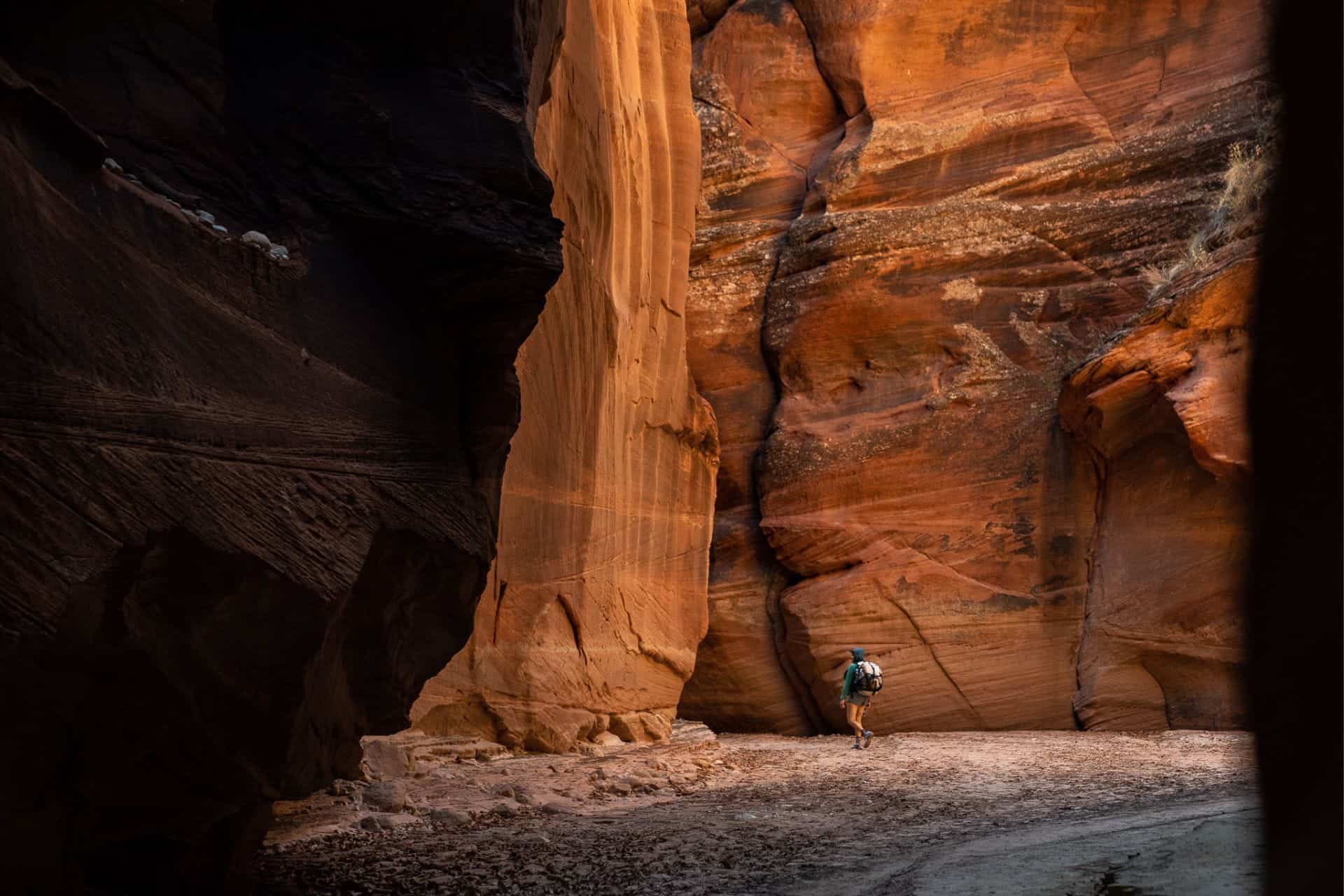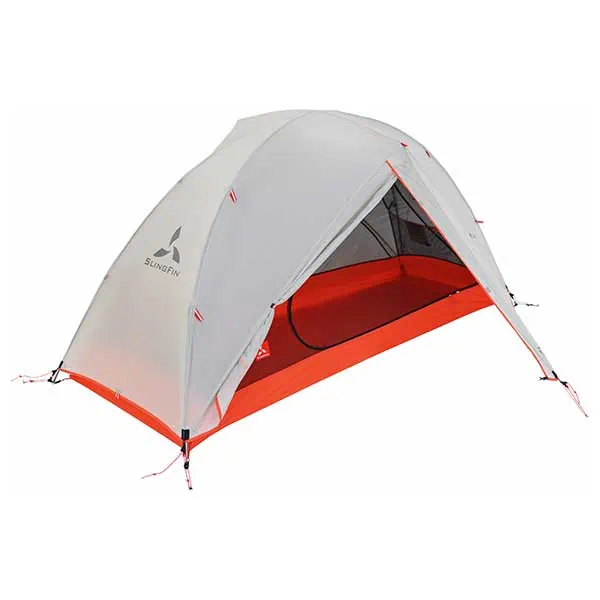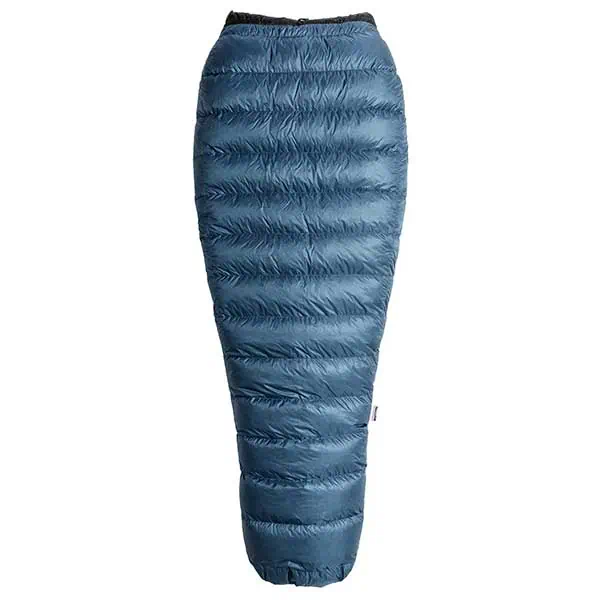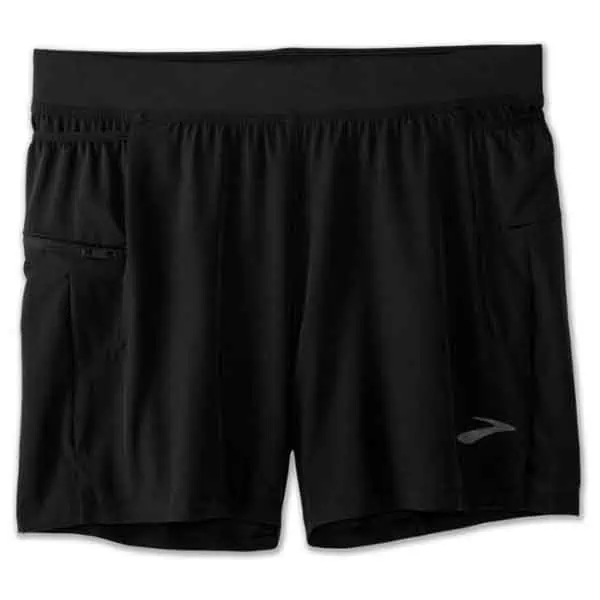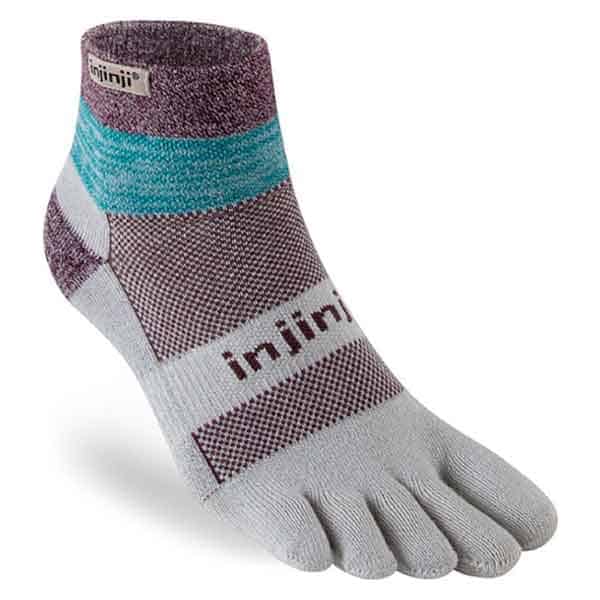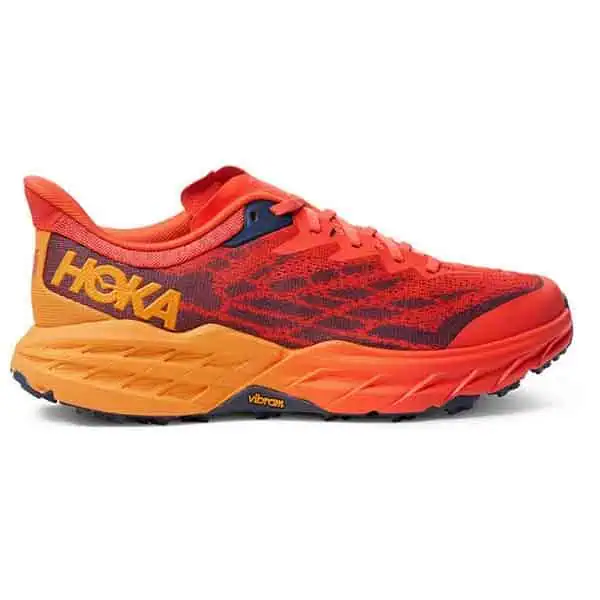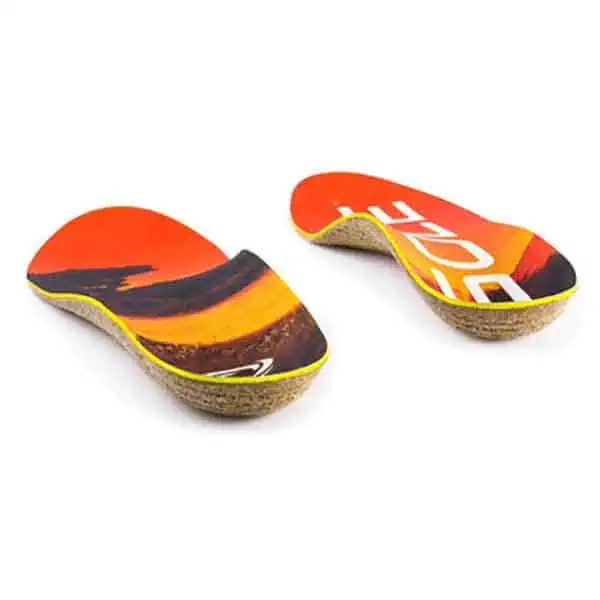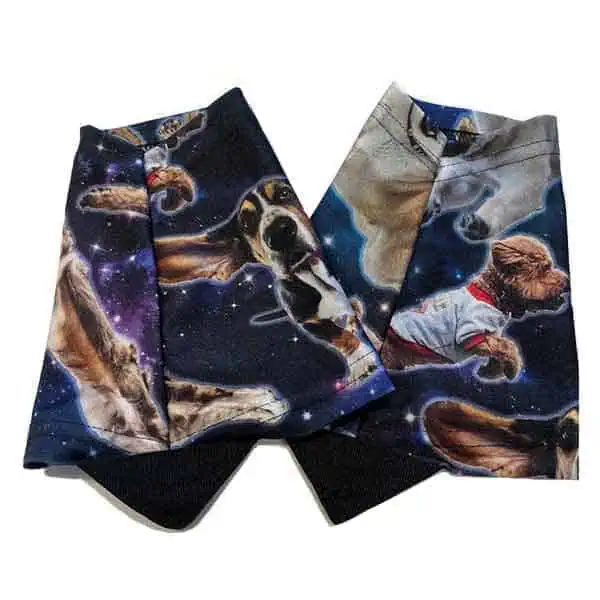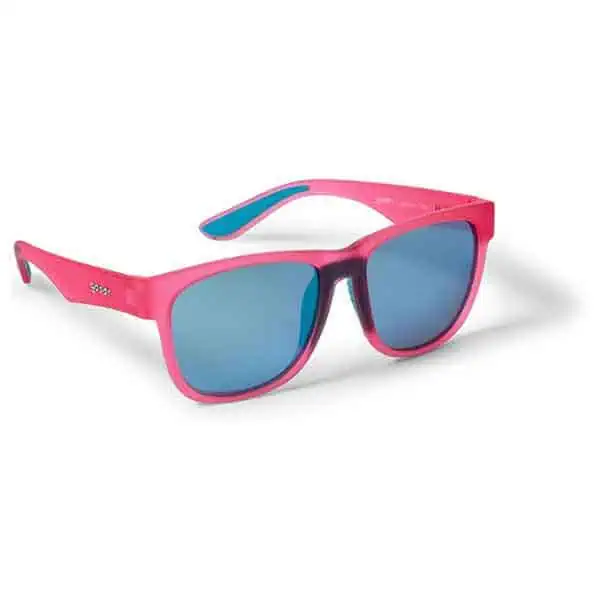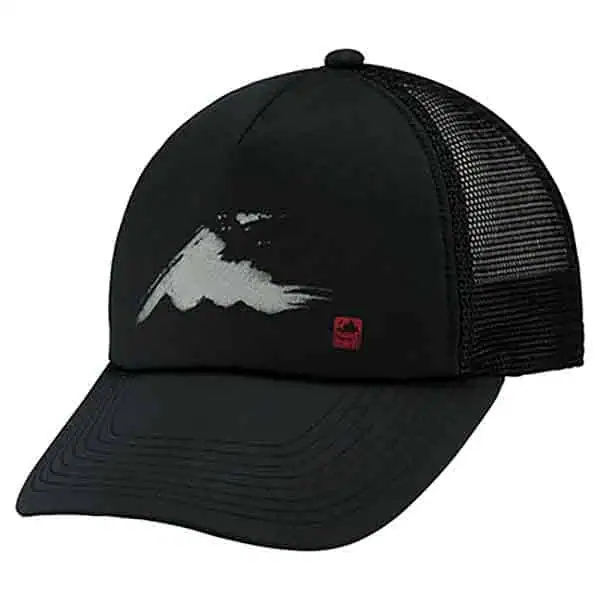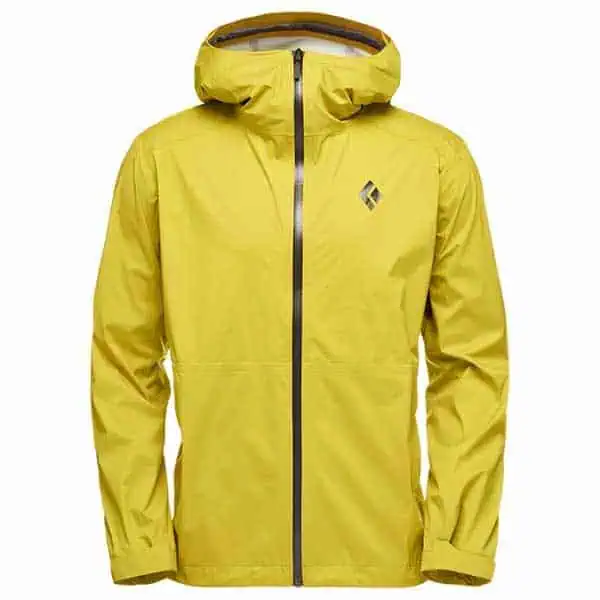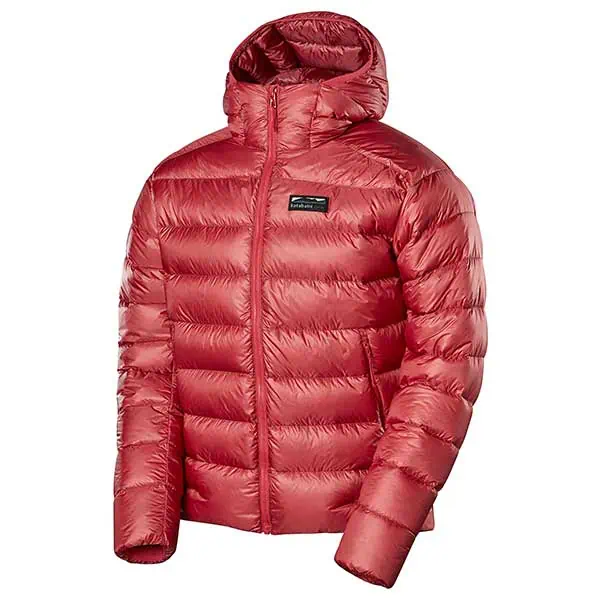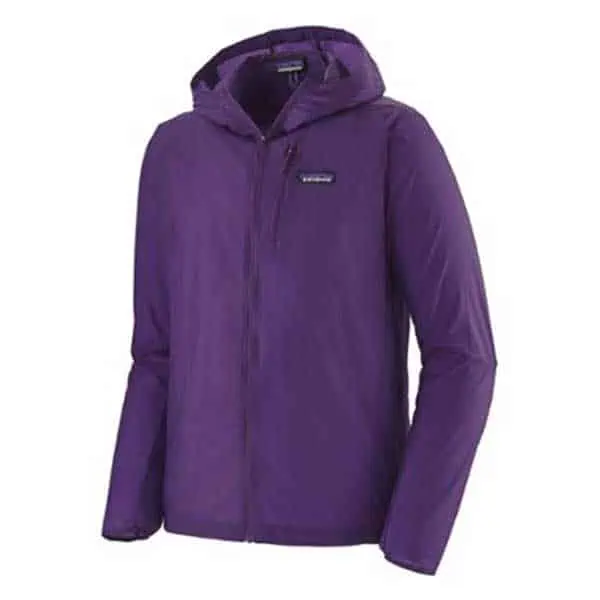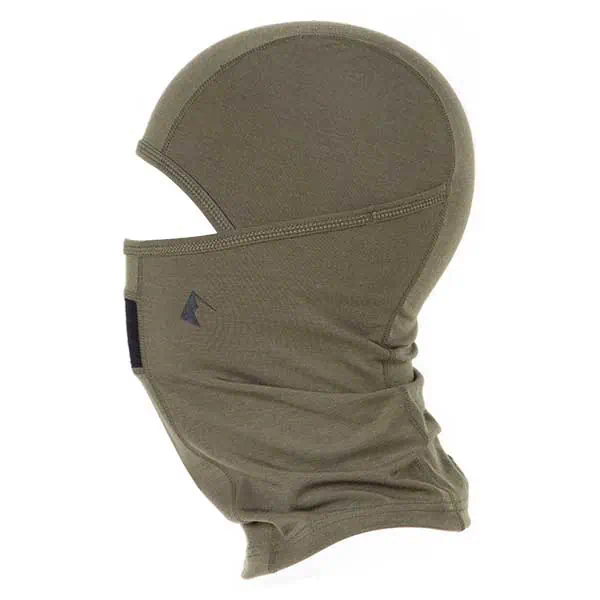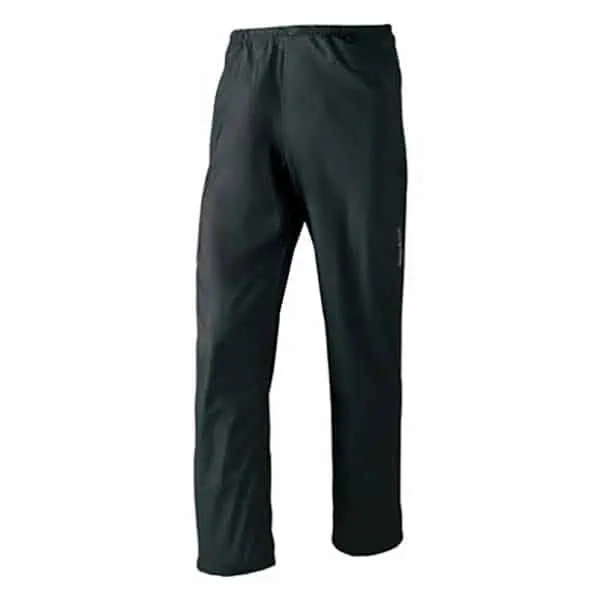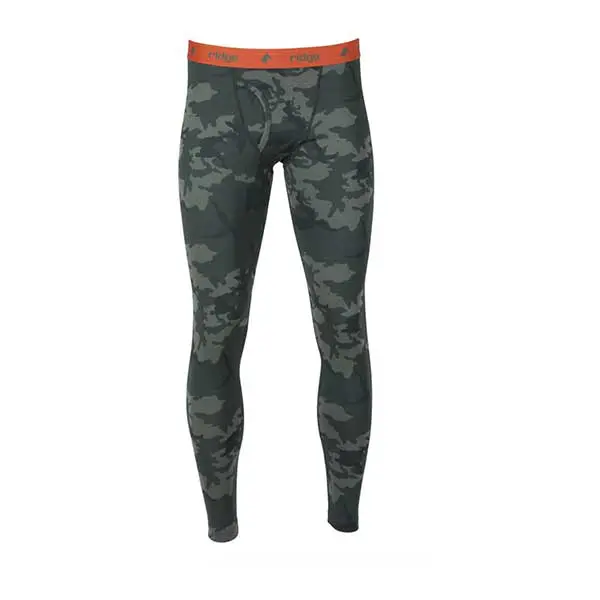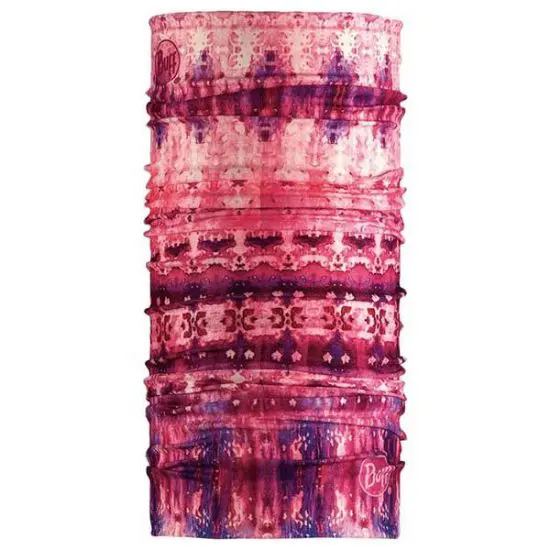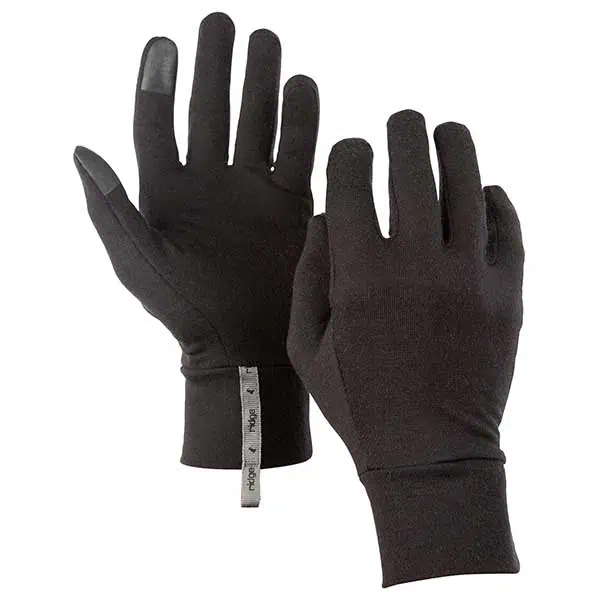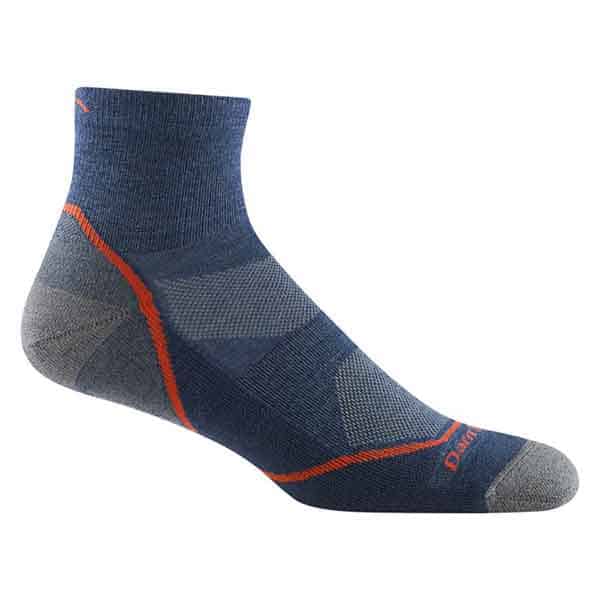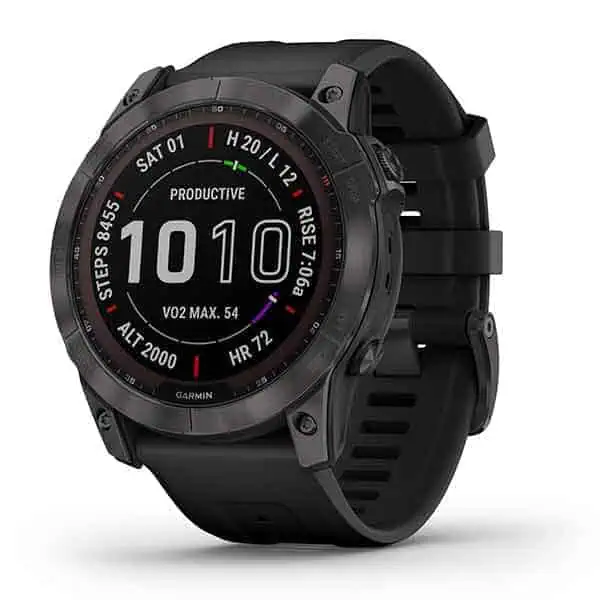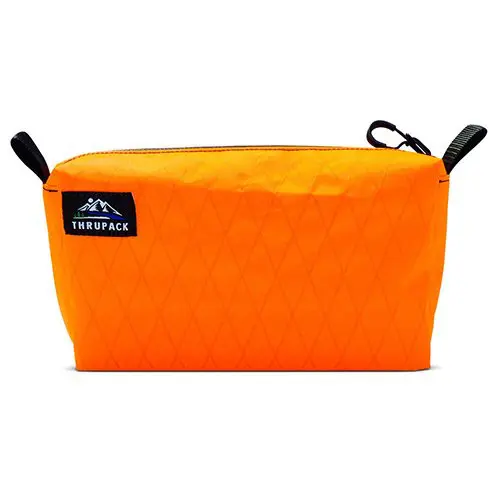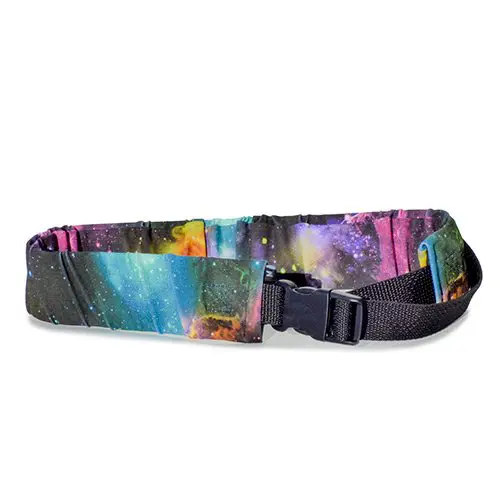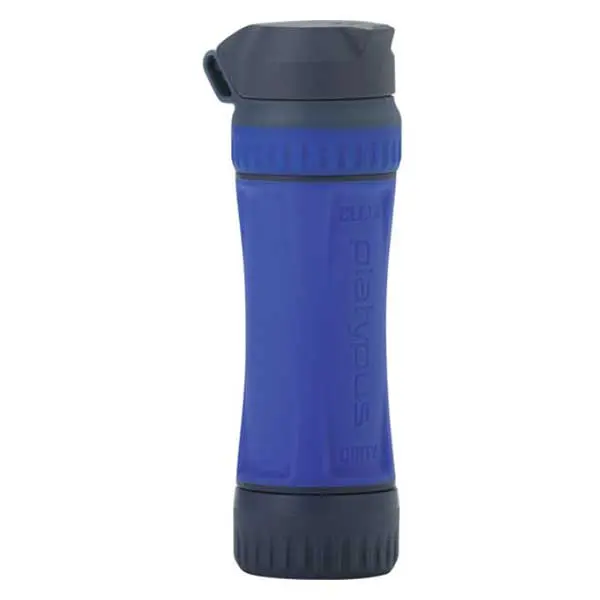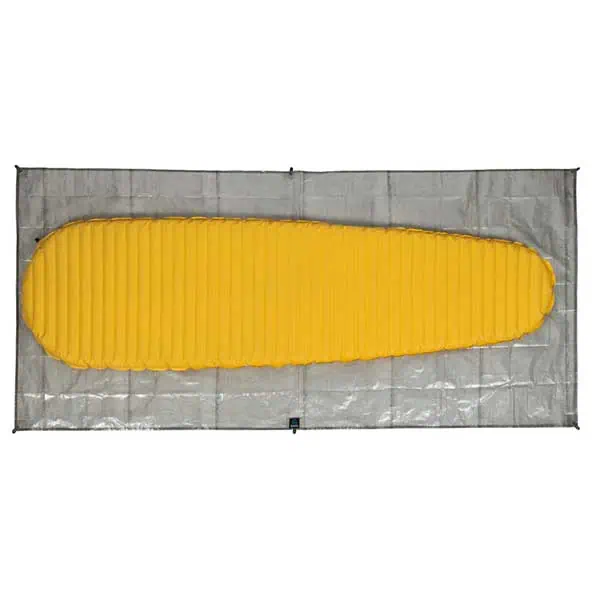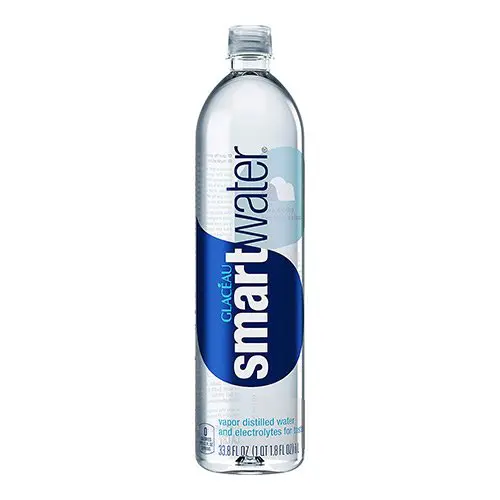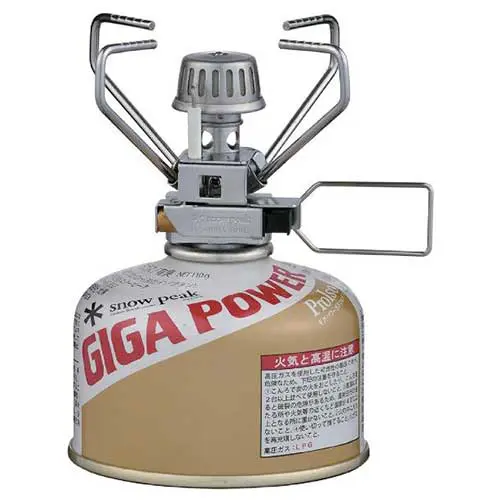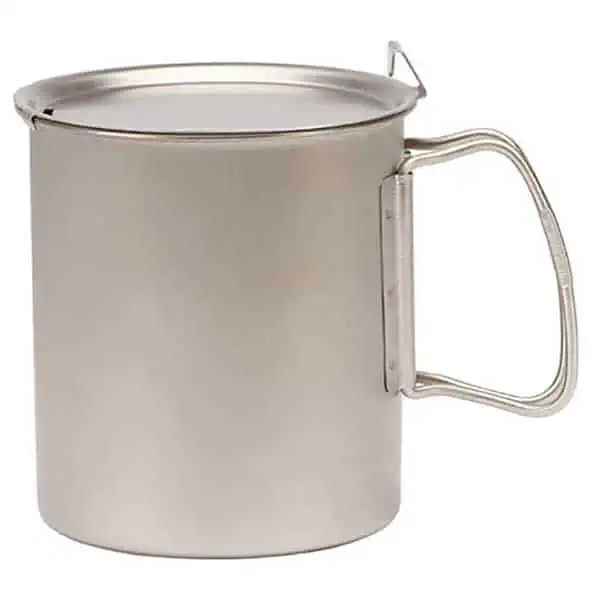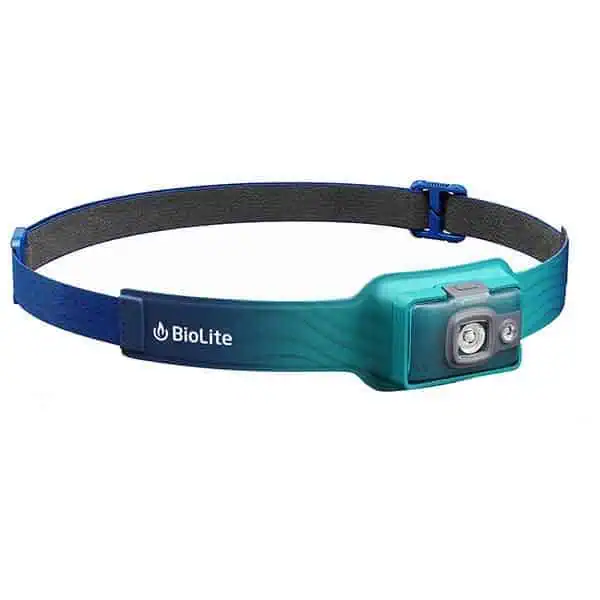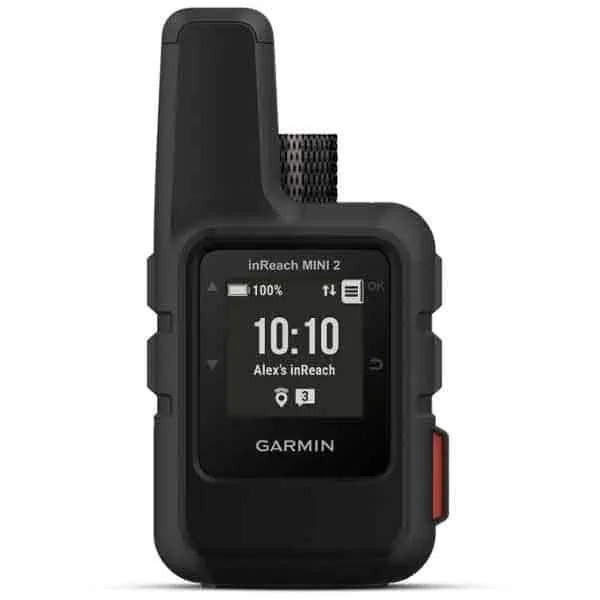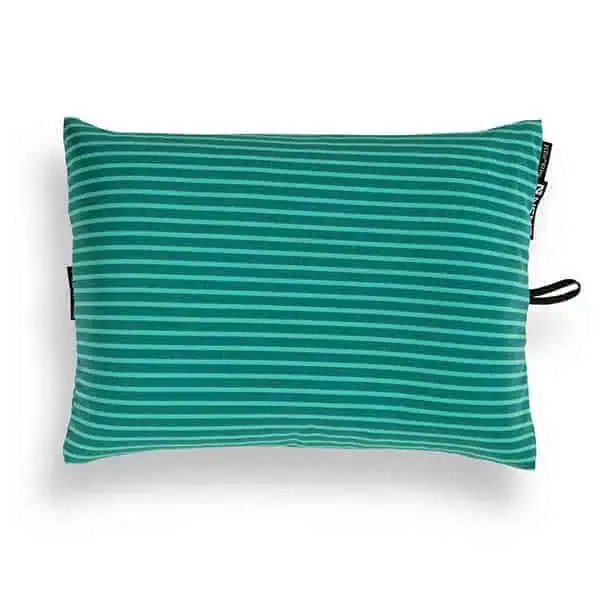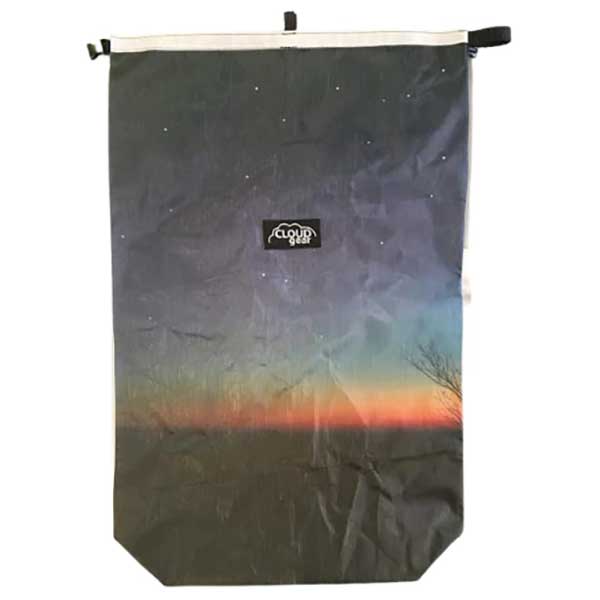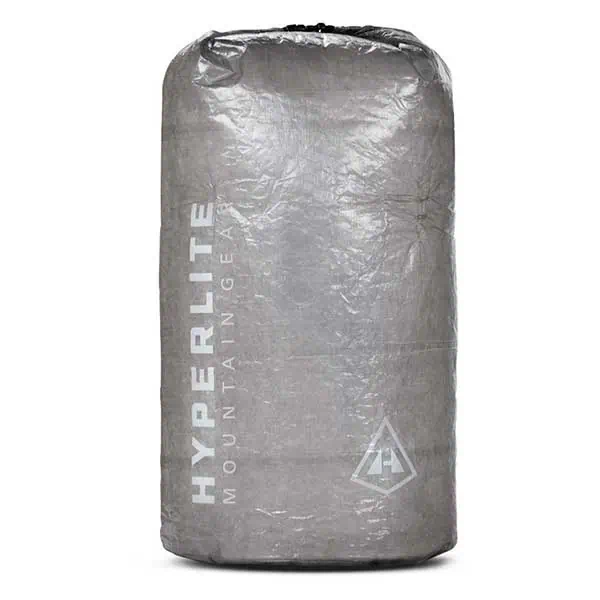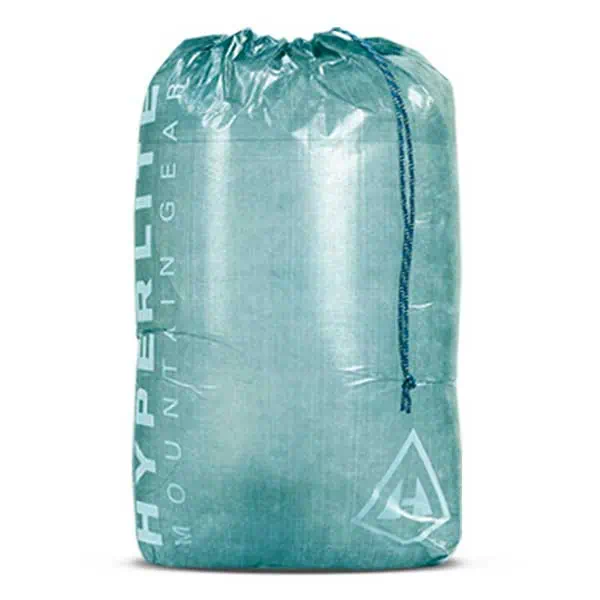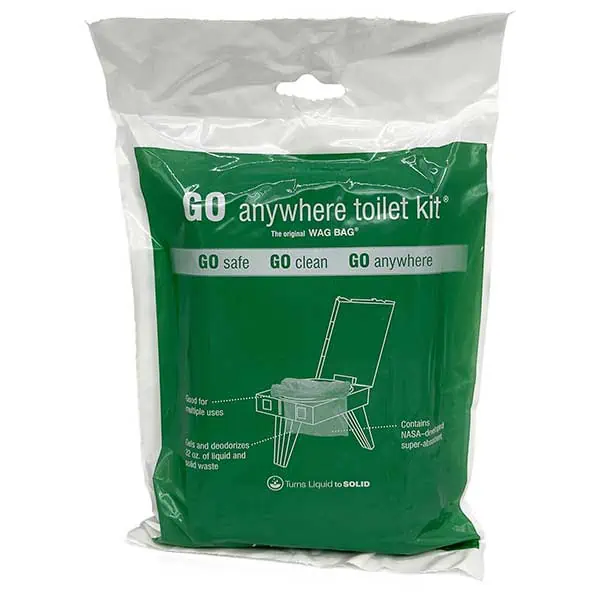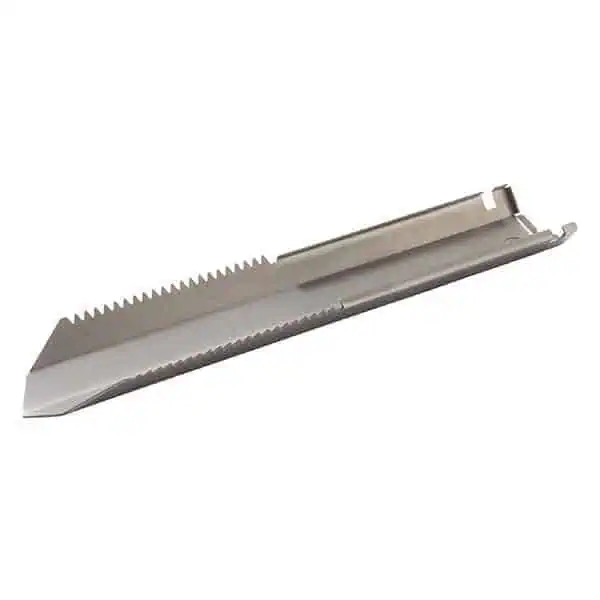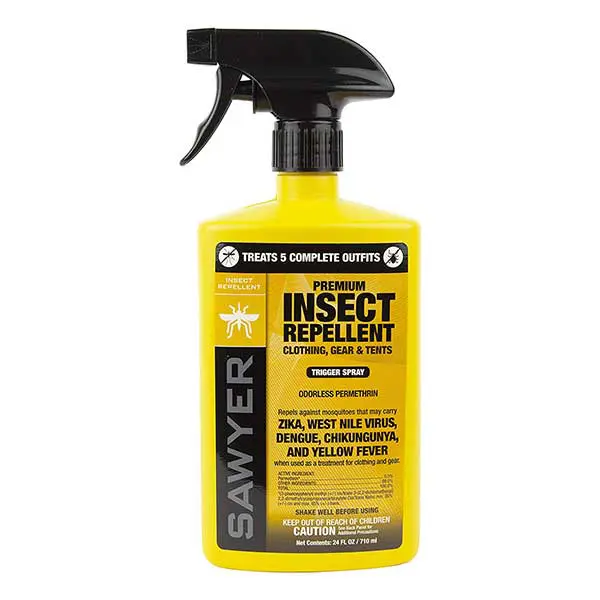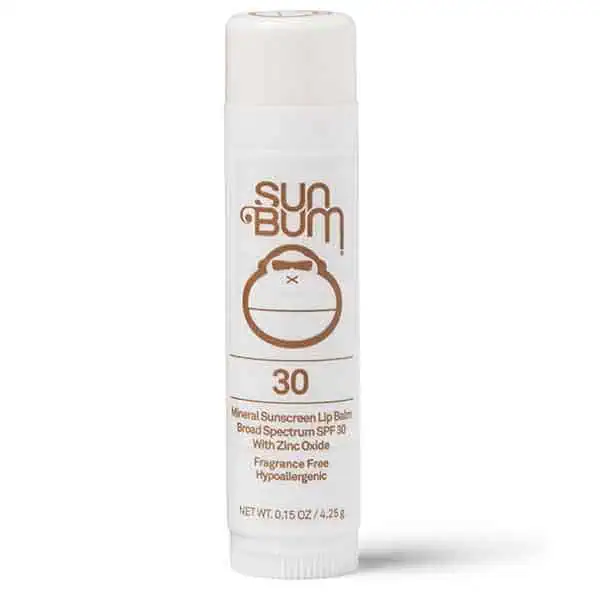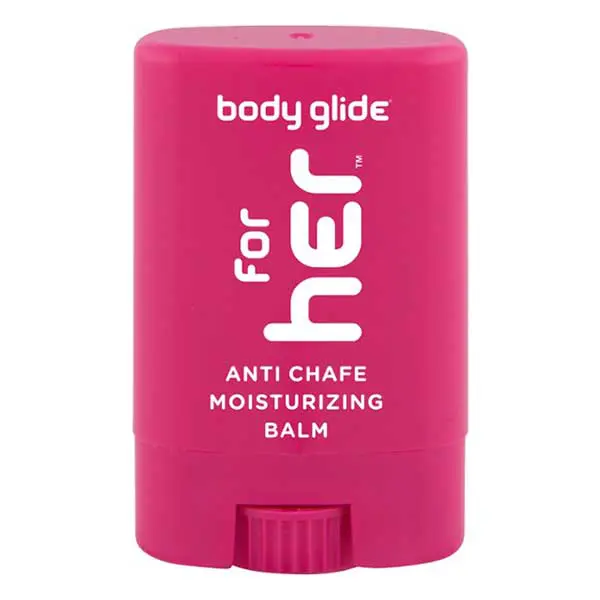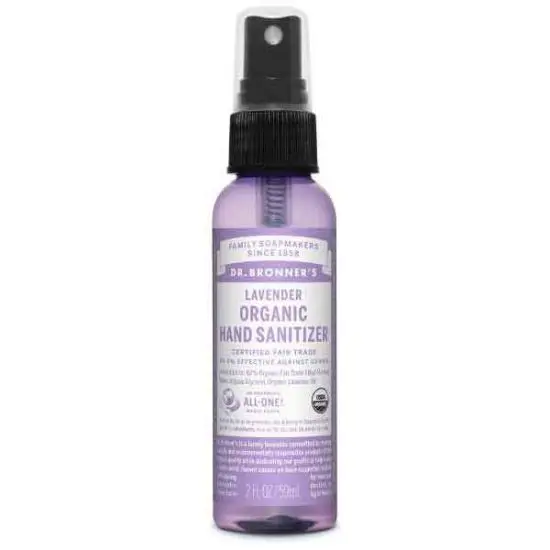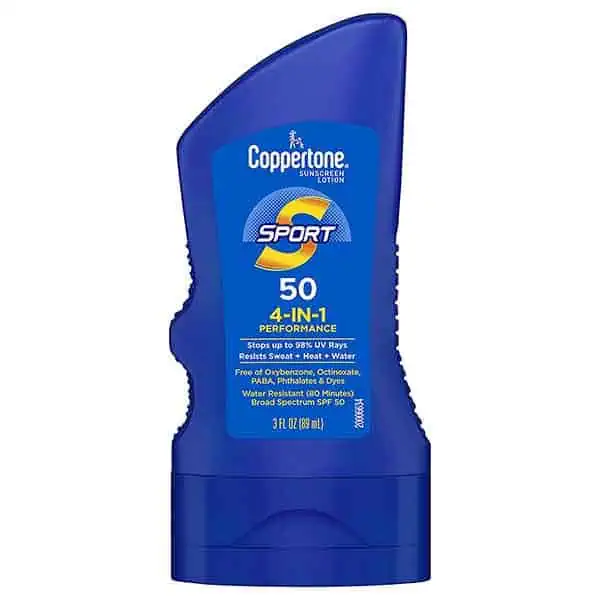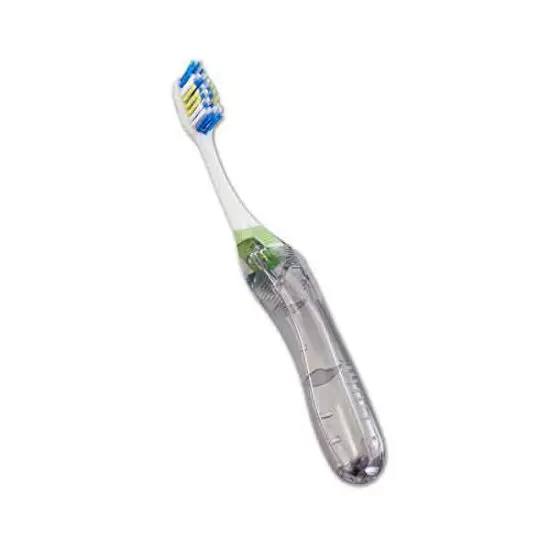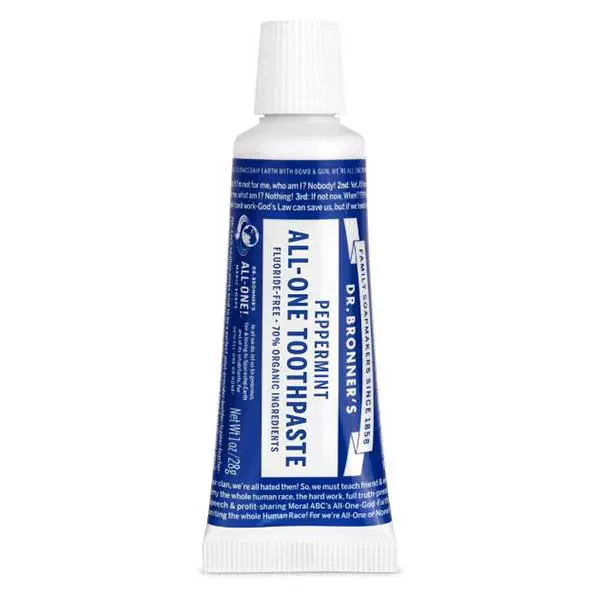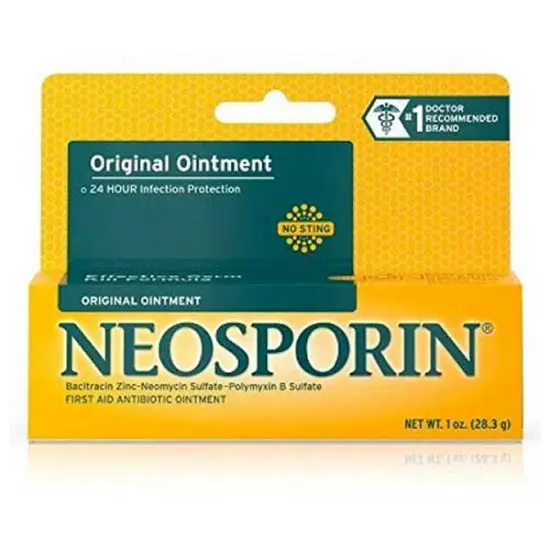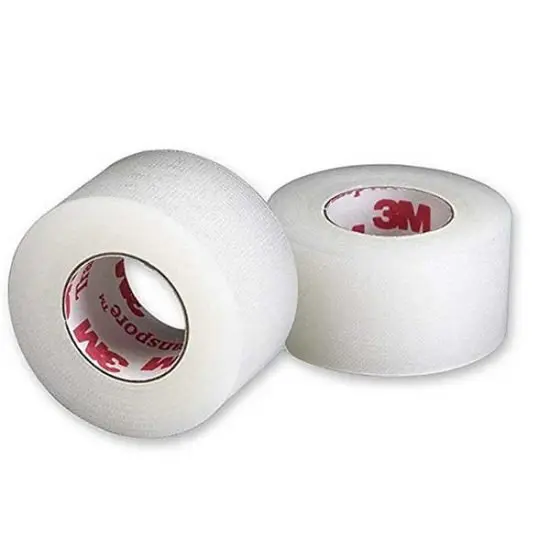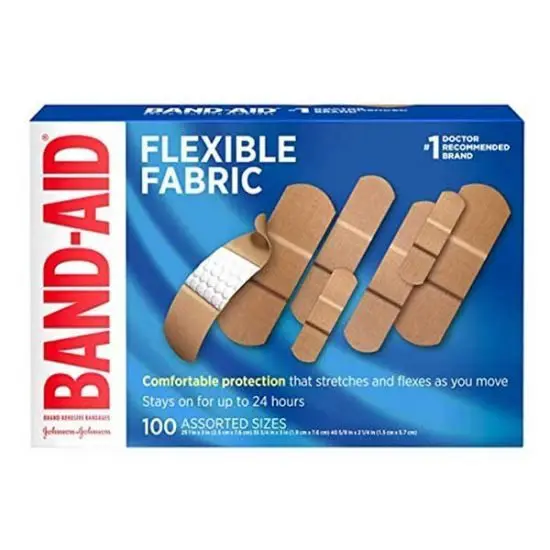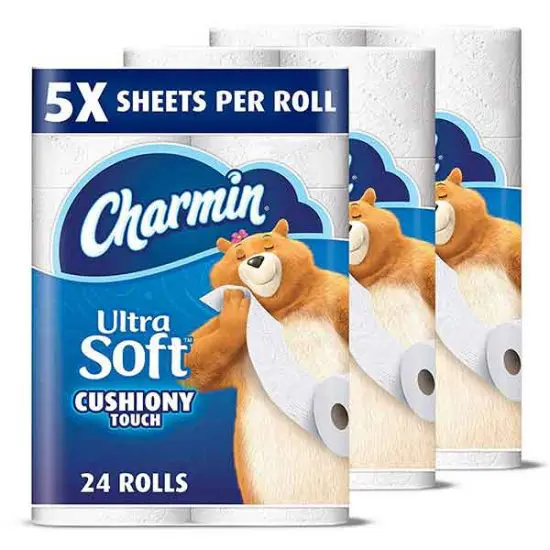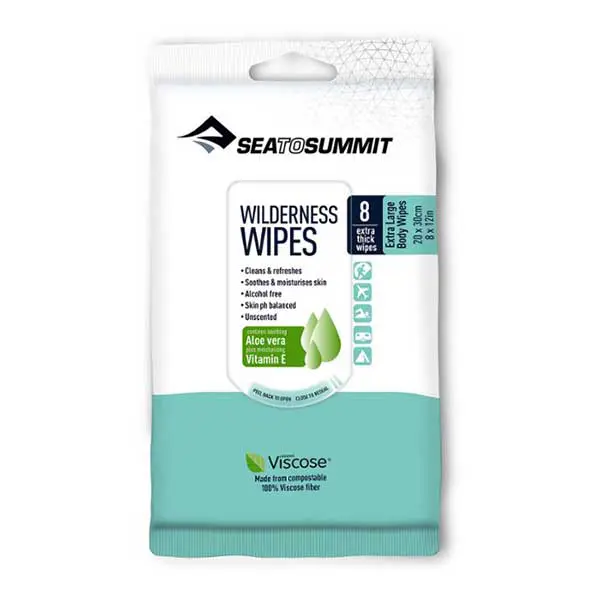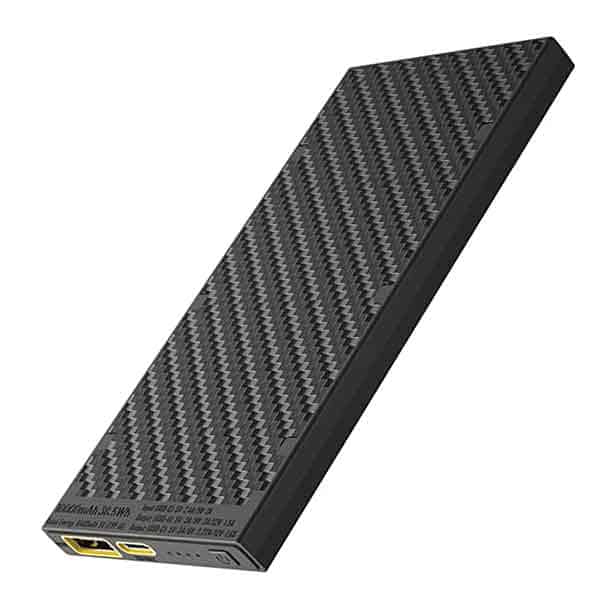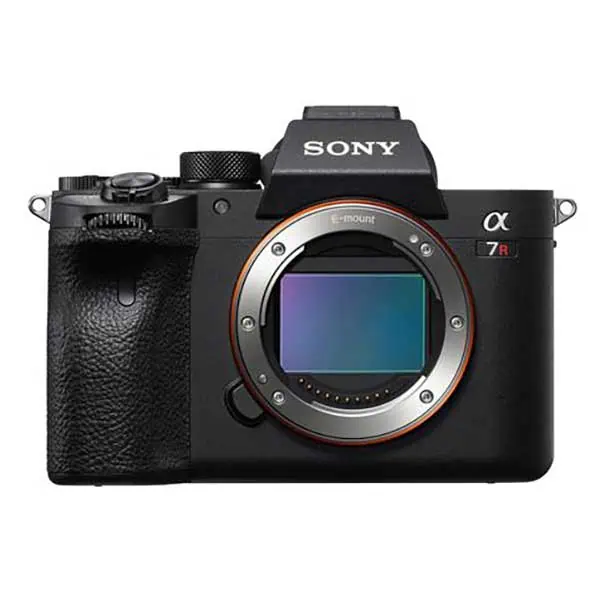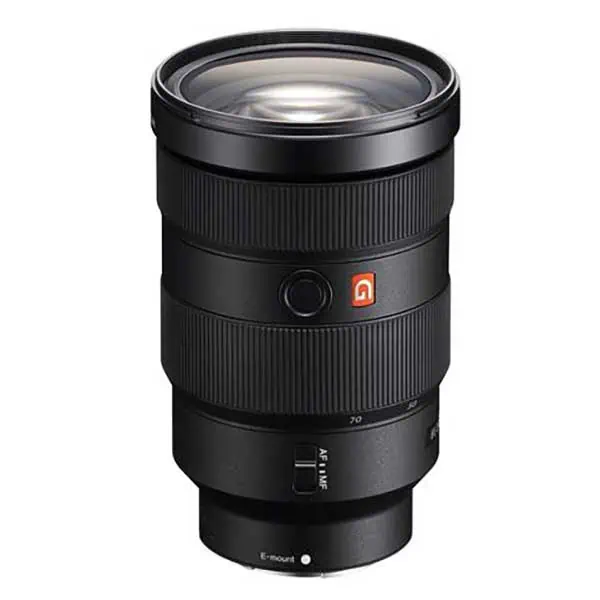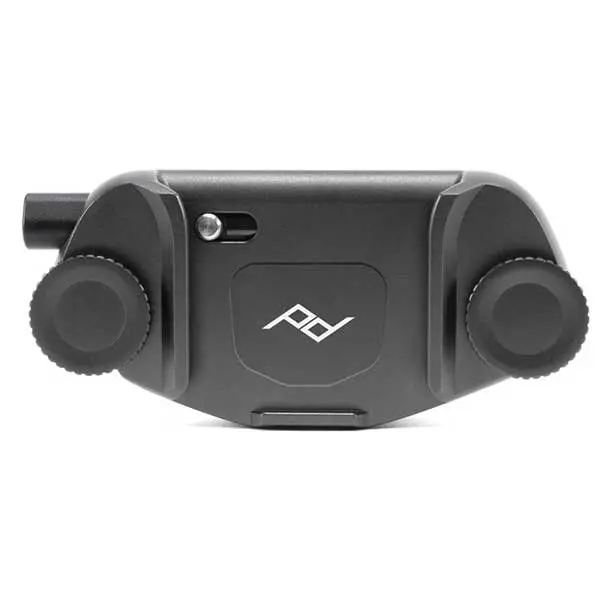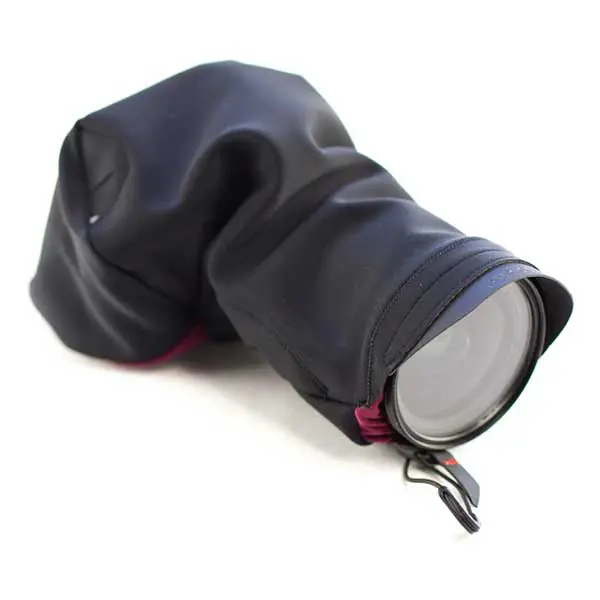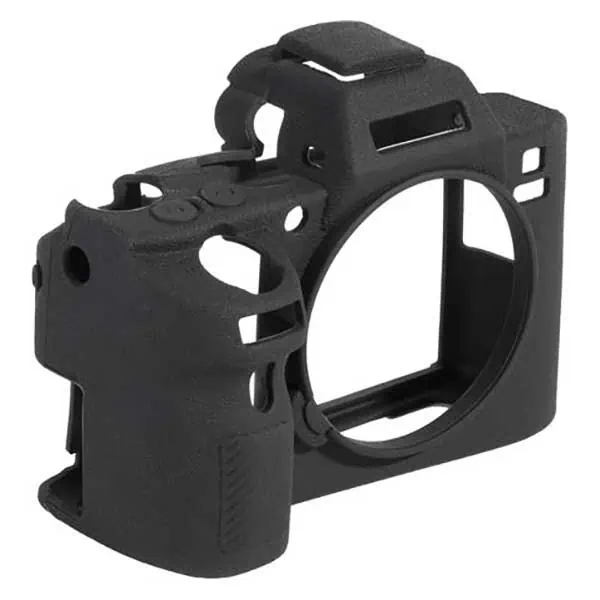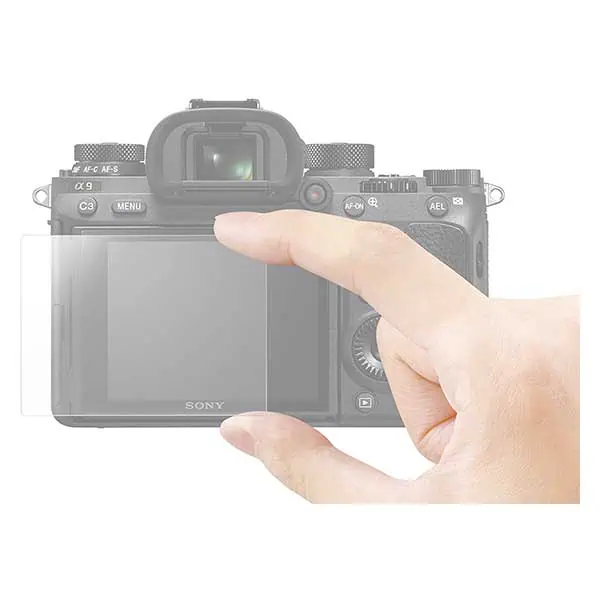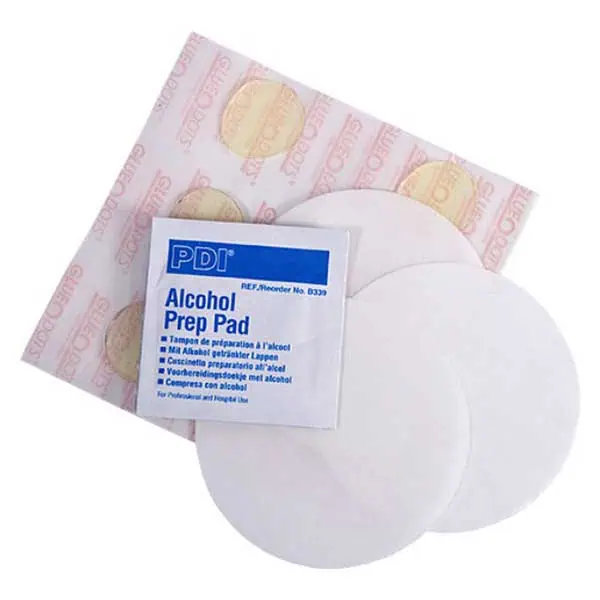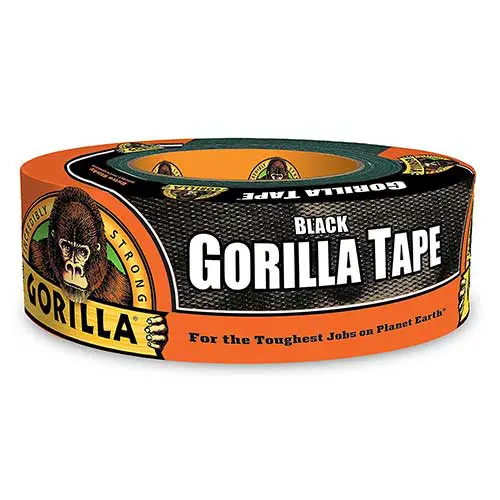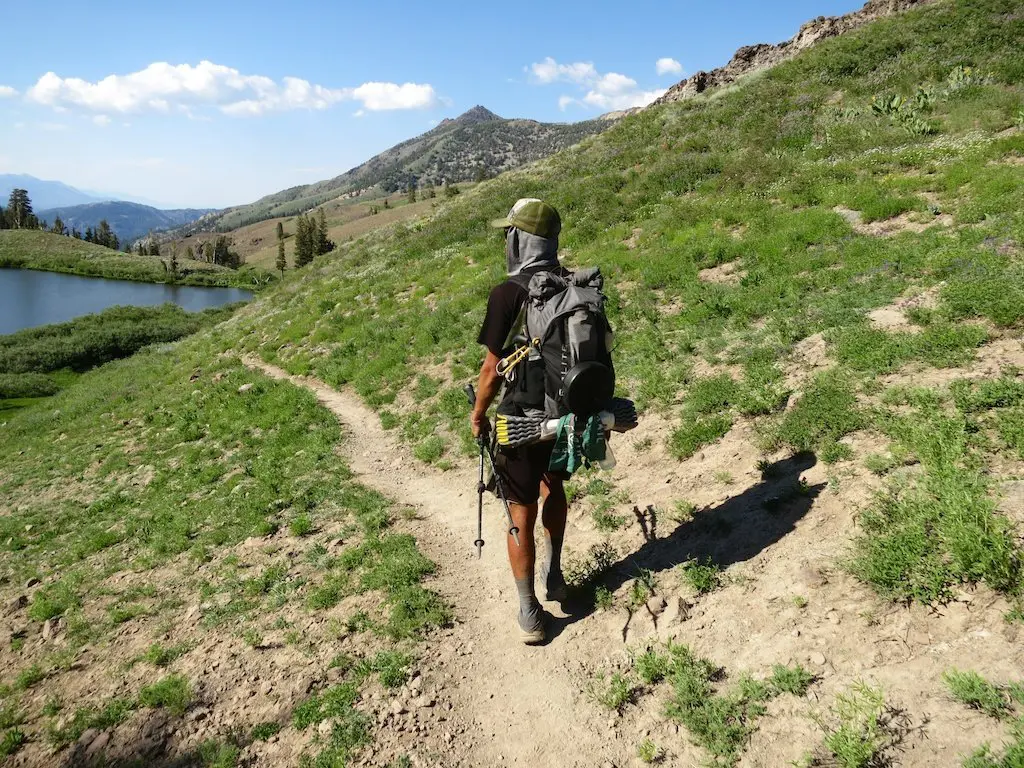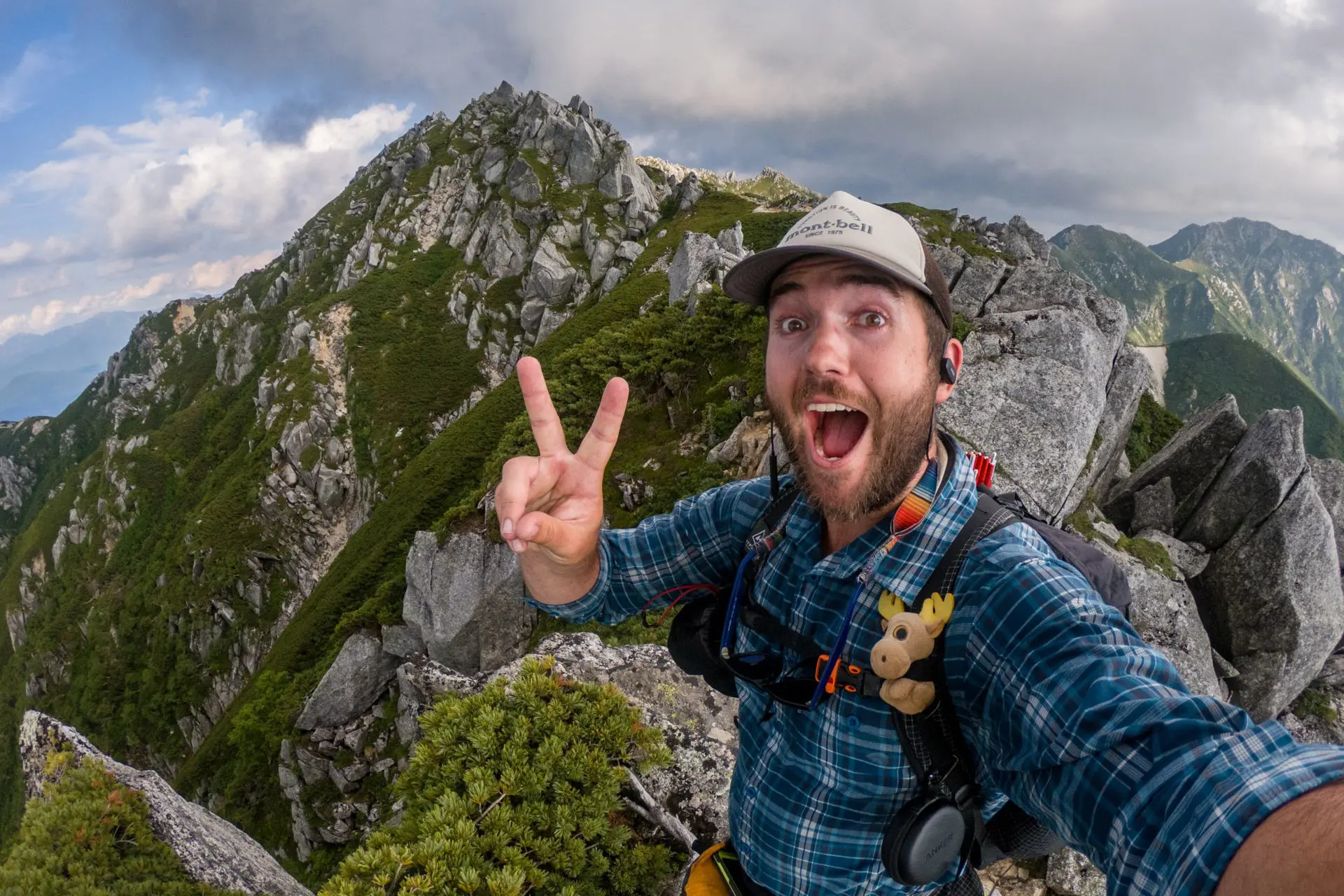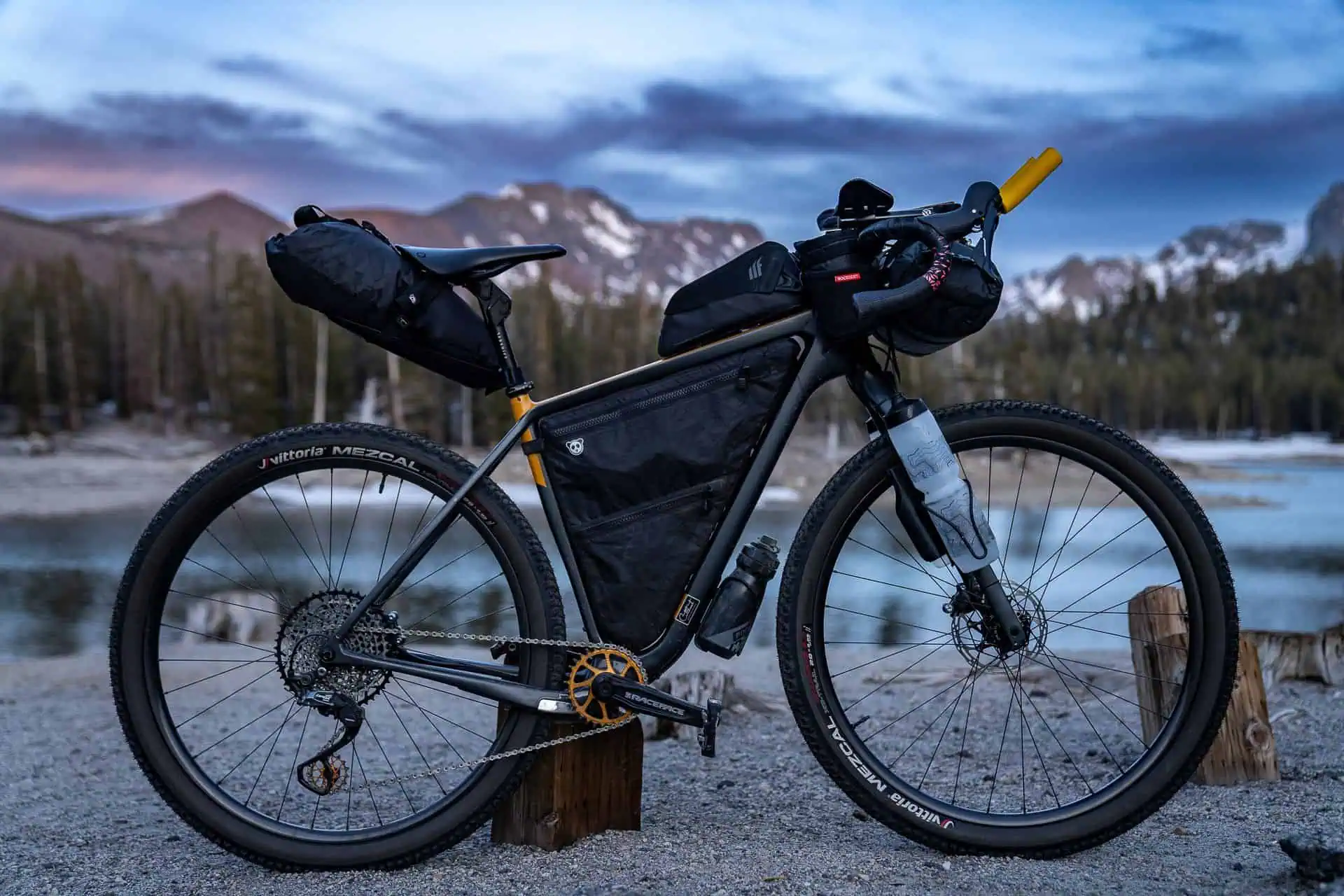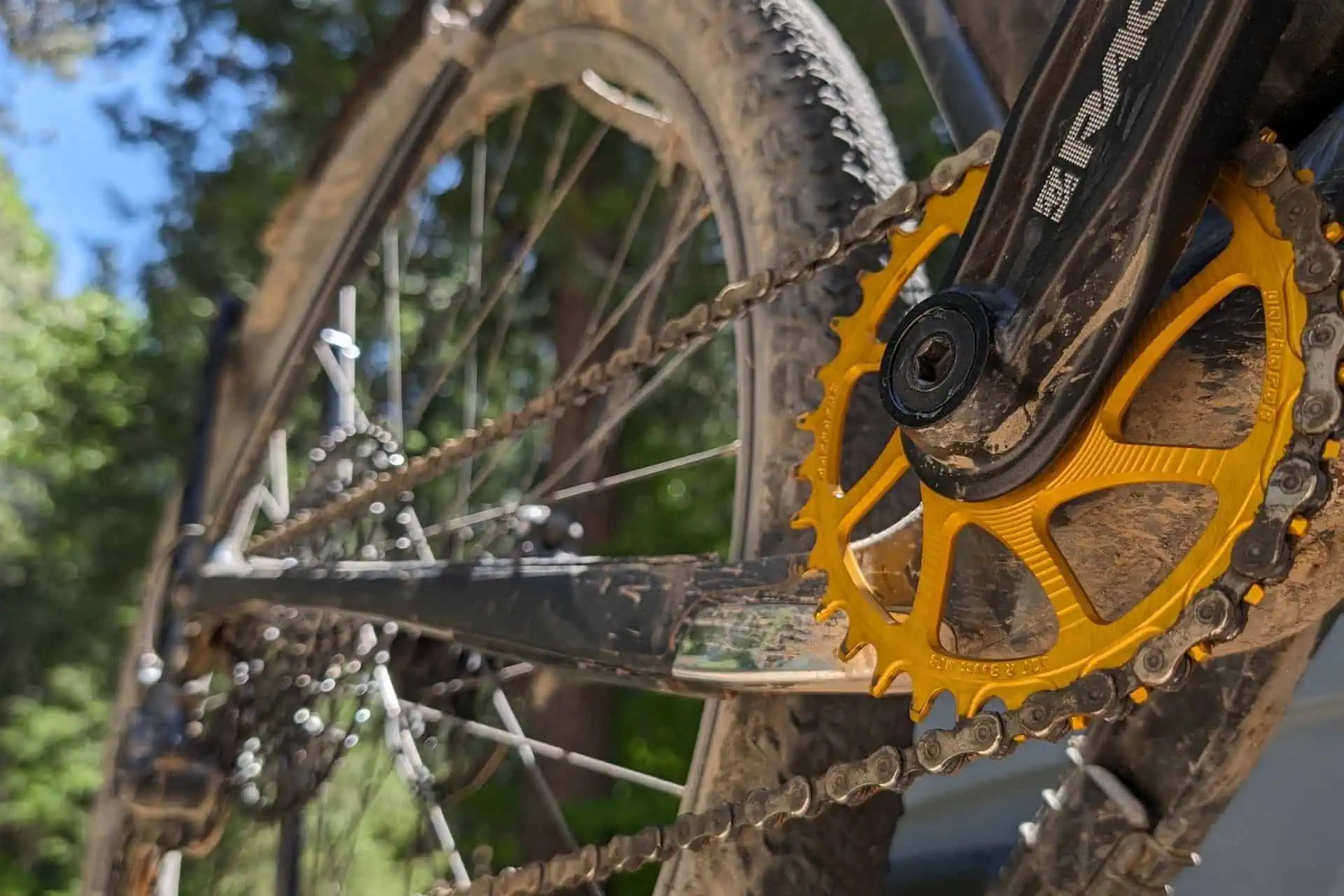Hayduke Trail Gear List: Everything You Need to Hike Across Utah
The Hayduke Trail may cover mostly Utah desert, but it requires more nuanced gear choices than one would expect from a “desert trail”. I’ve spent a lot of time going over my gear selection (and potential gear backups) for the Hayduke, and after taking into consideration my timing (spring), the current outlook (potentially cold and possibly snowy), and my objectives (pack rafting parts of the route), I have arrived at what will be my final kit for the adventure.
A lot of the gear is similar to my three-season backpacking gear, but there are some additional pieces that I haven’t brought along before; as well as some new pieces of gear I’ll be trying out for the first time. Probably not recommended, but in the worst-case scenario I have to swap something out along the way.
I’ve noticed that a lot of gear lists are guilty of leaving things out and only listing the big items instead of literally everything coming along for the hike. The below gear list is a reflection of everything I will be packing – not just the big items – to give a more realistic picture of what a Hayduke gear list looks like.

The Big Stuff
- Backpack: ULA Ultra Circuit (Torso: M, Hip Belt: M, Straps: J)
- Shelter: SlingFin Portal 1
- Sleeping Bag: Katabatic Flex 15 (6′ 900FP Expedry)
- Sleeping Pad: Therm-a-Rest NeoAir XLite NXT (Regular)
Worn Clothing
- Top: Ridge Merino Solstice Lightweight Pullover Hoodie (Medium)
- Shorts: Brooks Sherpa 2 in 1 Shorts 5in Inseam (Medium)
- Socks: Injinji Trail Midweight Mini-Crew (Large)
- Shoes: HOKA ONE ONE Speedgoat (12 Wide)
- Insoles: SOLE Performance Medium (Wide)
- Gaiters: UltraGam Gaiters (XL)
- Sunglasses: goodr BAMFGs Polarized Sunglasses
- Hat: Montbell Mesh Logo Cap #2
Packed Clothing
- Shell: Black Diamond StormLine Stretch (Medium)
- Insulated Jacket: Katabatic Tincup (Large)
- Wind Jacket: Patagonia Houdini (Medium)
- Balaclava: Ridge Merino Balaclava
- Wind Pants: Montbell Dynamo (Medium)
- Base Layer (Bottom): Ridge Merino Aspect Midweight (Medium)
- Neck Gaiter: Buff CoolNet UV+
- Head Net: Sea to Summit Head Net
- Gloves: Ridge Merino Glove Liner (Large)
- Socks: Injinji Trail Midweight Mini-Crew (Large)
- Socks: Darn Tough Hiker Quarter Midweight (Large) x 2
- Camp Shoes: Batman Sandals I got from a Walmart in Pagosa Springs, Colorado on the Continental Divide Trail
Carried/On-body
- Watch: Garmin fenix 7X Sapphire Solar
- Trekking Poles: Black Diamond Distance Carbon FLZ (125 cm)
- Fanny Pack: Thrupack Summit Bum
- Fanny Pack Strap: Thrupack Comfy Strap (Medium)
Backpacking Gear
- Water Treatment: Platypus QuickDraw
- Groundsheet: Zpacks Flat Groundsheet (Duplex)
- Backpack Attachment: ULA Flow (700 ml)
- Water Bladder: HydraPak Seeker 4L
- Water Bottle: smartwater 1.5L x 2
- Water Bottle: smartwater 1L x 2
- Water Bottle: smartwater 700 ml
- Stove: Snow Peak GigaPower 2.0
- Pot: Snow Peak Titanium Trek 700 Mug
- Fuel Canister: Fuel Canister (110 g)
- Utensil: Snow Peak Long Titanium Spork
- Headlamp: BioLite HeadLamp 325
- Satellite Messenger: Garmin inReach Mini 2
- Sleeping Bag Liner: Rab Silk Neutrino
- Pillow: NEMO Equipment Fillo Elite
- Food Bag: Cloud Gear Bear Bag
- Stuff Sack (Sleeping Bag): Hyperlite Mountain Gear Roll-top (Medium)
- Stuff Sack (Clothing): Hyperlite Mountain Gear Drawstring (Large)
- Stuff Sack (Electronics): Hyperlite Mountain Gear Drawstring (Small)
- Pack Liner: Nylofume Pack Liner
- Stakes: MSR Carbon Core Tent Stakes x 4
- Stakes: Vargo Titanium Ascent Tent Stakes x 4
- Stakes: MSR Ground Hog Stakes x 4
- Stuff Sack (Stakes): Hartford Gear Co. Stake Bag
Packrafting Gear
- Packraft: Alpacka Raft Scout
- Paddle: Supai Adventure Gear Olo Packraft Paddle
- PFD: Astral Airbelt 2 (for Escalante River and Grand Canyon National Park)
- Inflation: Alpacka Raft Inflation Bag
- Repair Kit: Alpacka Raft Basic Repair Kit
- Poop Kit: Cleanwaste GO Anywhere Toilet Kit Waste Bag (for Escalante River) x 3
Bathroom
- Trowel: Vargo Titanium Dig Dig Tool
- Repellent: Ben’s 100 Max Formula (1.25 fl oz)
- Pre-Trail Repellent: Sawyer Products Permethrin (not carried)
- Lip Balm: Sun Bum Mineral SPF 30
- Anti-Chafe Balm: Body Glide for Her (0.35 oz)
- Hand Sanitizer: Dr. Bronner’s Organic
- Sunscreen: Coppertone SPORT (3 oz)
- Toothbrush: GUM Folding
- Toothpaste: Dr. Bronner’s Travel (0.85 oz)
- Antibiotic Ointment: Neosporin
- Tape: 3M Medical
- Bandages: Band-Aids
- Toilet Paper: Charmin Ultra Soft
- Wet Wipes: Sea to Summit Wilderness Wipes
- Ear Plugs: Flents Foam Ear Plugs
Electronics
- Power Bank: Nitecore Carbo 20000
- Power Bank: Nitecore NB10000 Gen II x 2
- Headphones: Pixel Buds Pro
- Phone: Google Pixel 7 Pro
- Phone Case: Peak Design Everyday Case
- Wall Plug: Anker Nano II 65W
- Cable: USB-A to USB-C
- Cable: USB-A to Micro USB
- Cable: USB-C to USB-C
Apps
Camera Gear
- Camera: Sony A7R IV
- Lens: Sony FE 24-70 f2.8 GM
- Camera: DJI Pocket 2
- Tripod: Peak Design Travel Tripod (Carbon Fiber)
- Tripod Feet: Peak Design Ultralight Conversion Kit
- Camera Attachment: Peak Design Capture
- Camera Cover: Peak Design Shell (Medium)
- Camera Skin: Slinger Silicone
- Screen Protector: Sony PCK-LG1 Glass Sheet
- Memory Card: Sony TOUGH-G SDXC (64 GB) x 4
- Memory Card: SanDisk Extreme Pro Micro SDXC (256 GB) x 2
Odds & Ends
- Knife: Benchmade 533 Mini Bugout
- Gear Repair: Therm-a-Rest Patch Kit
- Gear Repair: Gorilla Tape
- Lighter: Mini Bic
- Extra Cap: Water Bottle Sport Cap
- Pen: Pilot G2
- Bags: Ziploc Quart Food Storage
- Bags: Reusable Grocery Bag (plastic) x 3
- Sunglasses Case: goodr Soft Case
- Wallet: Peak Design Mobile Stand Wallet
Fanny Pack Gear
- Head Net: Sea to Summit Head Net
- Utensil: Snow Peak Long Titanium Spork
- Knife: Benchmade 533 Mini Bugout
- Lighter: Mini Bic
- Anti-Chafe Balm: Body Glide for Her
- Lip Balm: Sun Bum Mineral SPF 30
- Sunscreen: Coppertone SPORT
- Hand Sanitizer: Dr. Bronner’s Organic
- Gear Repair: Gorilla Tape
- Headphones: Google Pixel Buds Pro
- Power Bank: Nitecore NB10000 Gen II
- Phone: Google Pixel 7 Pro
- Phone Case: Peak Design Everyday Case
- Pen: Pilot G2
That’s a total of 1.63 lb / 740 g (including the Summit Bum and Comfy Strap).
Base Weights
Base weight is the cumulative weight of your pack, minus consumables. Generally, consumables include your food, water, and fuel (if you’re using a stove), but this can also include things like toothpaste, sunscreen, toilet paper, and repellant (anything you consume whilst in the wilderness).
I’m listing my camera weight separately below to help anyone wanting to bring a similar kit but without an absurd amount of camera gear. Packrafting gear is also separate because I will not be carrying it for the entirety of the Hayduke (I will be mailing the packraft ahead to myself twice during the trip).
- Big 3 (backpack + shelter + sleeping bag): 4.67 lb / 2.118 kg
- Big 4 (backpack + shelter + sleeping bag + sleeping pad): 5.45 lb / 2.472 kg
- Clothing (packed): 3.13 lb / 1.418 kg
- Gear in pack (excluding Big 4, camera gear, packrafting gear, and clothing): 3.66 lb / 1.661 kg
- Camera gear: 5.82 lb / 2.640 kg
- Packrafting gear: 6.08 lb / 2.759 kg
- Total base weight (excluding camera and packrafting gear): 11.46 lb / 5.196 kg
- Total base weight (excluding packrafting gear): 17.28 lb / 7.836 kg
- Total base weight: 23.36 lb / 10.595 kg
- Total fanny pack weight: 1.88 lb / 851 g
- Total weight (including fanny pack): 24.35 lb / 11.043 kg
Detailed View
ULA Equipment Ultra Circuit (Torso: M, Hip Belt: M, Straps: J)
The ULA Circuit has long been one of the most popular packs among thru-hikers and, somehow, is also a pack I’ve never tried myself. Because I’m going to need a pack capable of carrying slightly heavier loads and because the Circuit is now available in Ultra (a fancy durable and waterproof fabric that’s – hopefully – great for bushwhacking and river crossings). ULA was also kind enough to omit the pockets from the pack which will save me a little bit of weight and keeps my fanny pack functional.
33.8 oz / 958.2 g
SlingFin Portal 1
I am a huge fan of the SlingFin SplitWing so I’ve decided to try out the new SlingFin Portal 1 on the Hayduke. It’s freestanding with a single, side-entry door, 19.25 ft² / 1.79 m² of interior space, and an interior height of 41 in / 111 cm. My expectation is that I will be cowboy camping for much of the trail, so when I set up my shelter it will mean that the elements are against me. I want something bomb-proof that I know will hold up to whatever the Hayduke throws at me – whether that’s wind, snow, rain, or nests of scorpions.
40 oz / 1.134 kg
Katabatic Flex Quilt (15°F / 6′ / 900FP Expedry)
I’m a huge fan of my Katabatic Palisade but I am thinking I will need something a bit warmer and more versatile for the conditions I expect to encounter on the Hayduke, i.e. potentially well-below freezing or quite warm. The Katabatic Flex nicely suits my needs as it will keep me warm (or at least alive) down to temperatures of 15°F / -9°C and it can also be opened all the way up and laid flat for when temperatures (hopefully) warm up a bit.
22.5 oz / 638 g
Therm-a-Rest NeoAir XLite NXT (Regular)
The Therm-a-Rest NeoAir XLite NXT is the newest version (at the time of publication) of the NeoAir XLite that promises to be “6x quieter” than its predecessor. It has an R-value of 4.5 (up from 4.3) and an easy-to-use one-way valve. I’m hoping I won’t regret not bringing a more durable (or a foam) sleeping pad into my journey across the desert, but that’s why I’ll have a patch kit with me.
12.5 oz / 354 g
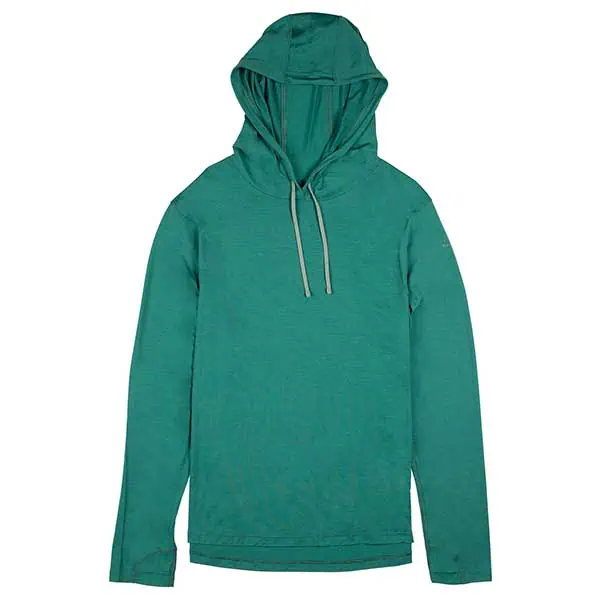
Ridge Merino Solstice Lightweight Pullover Hoodie (Medium)
I’ve slowly grown into a connoisseur of backpacking hoodies and the Ridge Merino Solstice is by far my favorite. It has a high-volume hood with drawstrings that can usually keep it from flying off (you may have to loop or tie them), thumb loops, and is super comfy. Highly recommended – one of my favorite pieces of gear. For more on hoodies, check out the best backpacking sun hoodies.
Detailed review | 9 oz / 255 g
Brooks Sherpa 2 in 1 Shorts 5in Inseam (Medium)
I discovered the Brooks Sherpa 2 in 1 Shorts 5in Inseam when I took up running last year and I’ve started to use them for all things outdoors, including backpacking. These are what I wore for all my long runs while training for my ultramarathon and also what I ran during the 100-mile race. I’ve since worn them on backpacking trips with equal success.
3.9 oz / 111 g
Injinji Trail Midweight Mini-Crew Socks (Large)
A common refrain you’ll hear from Hayduke hikers is that sand will get everywhere – especially in your socks and shoes. The con of wearing the Injinji Trail Midweight Mini-Crew toe socks is that it will be a pain to put them back on when they’re disgusting and muck-filled. However, the pro is that I will (hopefully) avoid additional rubbing and/or blistering between my toes due to the amount of sand that will inevitably end up in my shoes. I still love my Darn Tough socks and in addition to bringing two pairs of Injinjis, I am bringing two pairs of Darn Tough Socks as well. For more on socks, check out the best socks for thru-hiking.
2 oz / 57 g (pair)
HOKA ONE ONE Speedgoat (12, Wide)
I have grown confident using the HOKA ONE ONE Speedgoat on slippery granite in the Sierra Nevada and am betting they will serve me equally well on slick sandstone on the Hayduke. My one issue with the Speedgoat is that there’s no gaiter attachment point at the heel, so I need to modify them by attaching a piece of velcro to the back for gaiter attachment. For more on shoes, check out the best shoes for thru-hiking.
21.6 oz / 612 g (pair)
SOLE Performance Medium
I used insoles when I first began thru-hiking and then decided to drop them without a real reason. Because I expect to be carrying heavy loads on the Hayduke, I’ve decided to continue using insoles for additional support in the form of the SOLE Performance Medium insoles. There’s a wide version (nice for my wide shoes) and a variety of thicknesses which means that I can adjust if needed as the trail goes on.
4.6 oz / 130 g (pair)
UltraGam Gaiters (XL)
If you aren’t going to use gaiters for the Hayduke, then I don’t know when you would possibly want to use them. I consider gaiters to be a necessity for the Hayduke. UltraGam Gaiters come to us via Etsy and have some of the most amazeballs designs available. They attach to your shoes via a hook at the front (that goes on your laces or connects to the designated gaiter loop) and a piece of velcro at the back (you’ll need to apply a piece of velcro to your shoes if you don’t already have some built-in).
2.6 oz / 74 g (pair)
goodr BAMFGs Polarized Sunglasses
Whether protecting from the sun’s reflection off the snow or water or simply shielding me from the desert sun, sunglasses are a must for any Hayduke hike. I am a fan of the goodr BAMFGs Polarized Sunglasses because they 1) come in large sizes to fit my extra-wide head, 2) are affordable which means I can beat up on them a bit more, and 3) they come in a variety of awesome colors.
0.9 oz / 26 g
Montbell Mesh Logo Cap #2
Hats are another personal choice. I’ve always worn hats but have the same problem with hats as I have with sunglasses – I have a big head. The Montbell Mesh Logo Cap #2 fits me great and reminds me of all the time I spent climbing mountains in Japan (need to get back there). Recommended if you’re looking for a simple, well-fitting hat to explore in – especially if you have a large head.
2.8 oz / 79 g
Black Diamond StormLine Stretch (Medium)
The Black Diamond StormLine Stretch is made with BD.dry 2.5L, two-way stretch woven face material with a DWR finish. It was a hugely popular shell among Pacific Crest Trail hikers according to the PCT Gear Survey, so I’ve decided to try it out myself to see what the hype is about. I’m not planning (or hoping) to encounter too much rain and/or snow on the Hayduke, but should I find myself in a position to need a shell, I want to have one that’s going to keep me dry and not soak through after an hour of hiking in the rain. I’ve been caught in desert storms in the past and they can be intense.
11.29 oz / 320 g
Katabatic Gear Tincup (Large)
The Katabatic Gear Tincup is a lightweight puffy with 5.5 oz / 156 g of 850+ fill power HyperDry goose down. It has two zippered handwarmer pockets, elasticized hem and cuffs, and does everything I need to keep me warm. I am expecting cold temperatures on the Hayduke this spring, so I am opting to bring this slightly heavier down jacket instead of something like the, slightly lighter, Katabatic Gear Tarn.
Detailed review | 11.4 oz / 323 g
Patagonia Houdini* (Medium)
The Patagonia Houdini isn’t something I always bring with me, but if I’m expecting wind, weather, or colder temperatures, then it earns a place in my pack. Hiking in my shell when it’s windy is rarely an option since I run incredibly hot and will end up just sweating. The Houdini is lightweight enough to not provide too much warmth but to be able to defeat the wind. It’s also light enough to pay for itself with just a couple of uses (as far as the weight penalty).
3.7 oz / 105 g
Ridge Merino Balaclava
Because I’ll be using a quilt and I expect some frigid nighttime temperatures, I like having something to keep my head warm – especially if I’m cowboy camping. The Ridge Merino Balaclava offers versatility as the front of it can be easily pulled down to expose the lower half of your face, or pulled up for particularly cold nights. It also has a mesh panel to facilitate breathing and save you from feeling like you’re trying to breathe through a sock.
2.5 oz / 71 g
Montbell Dynamo Wind Pants*
Honestly, I’ll probably end up destroying the Montbell Dynamo Wind Pants on the Hayduke, but I want to at least feel like I have something to keep me protected from the inevitable bushwhacking. At the very least, they’ll save me from bugs (which I don’t expect to encounter a ton of) or maybe actually serve their original purpose and do me some favors on a chilly and windy day/night. One downside? There’s no way to get them on and off without taking off my shoes, but I suppose zippers would add some of that much-feared weight.
2.8 oz / 80 g
Ridge Merino Aspect Midweight Bottoms* (Medium)
I love both my shorts and waking up and hiking early. However, some mornings those early-morning chills are sometimes at odds with my shorts and so the Ridge Merino Aspect Midweight Bottoms become a nice thing to have. Should I need even more protection, I’ll layer these with my wind pants (below). How do I put these on and take them off when I use shorts with a liner? Get naked, obviously.
6.2 oz / 176 g
Buff CoolNet UV+
It’s never a bad idea to have an extra neck gaiter around. The Buff CoolNet UV+ usually lives on my neck/head/face/wrist during the mornings/evenings/cold parts of the day. This buff is designed to be used in the sun and supposedly doesn’t heat up as much as an original buff, but I have trouble keeping it on an entire day (I run hot). I’m also hoping it will prove useful for added UV face protection on the packrafting bits of the trip.
1.2 oz / 34 g
Sea to Summit Head Net
I know that wearing a head net makes you look like a tool, but deep in mosquito country, nobody cares about how dumb they look – only about how many mosquitoes are not currently in and/or on their face. The Sea to Summit Head Net is a lightweight solution with an adjustable hem that it’s probably worth bringing two because you’ll be able to sell one for ten times the price to some sucker without one.
1.2 oz / 34 g
Ridge Merino Glove Liner (Large)
Gloves, as with tights, are a necessary part of my early-morning backpacking kit. The Ridge Merino Glove Liners are some of the lightest gloves I’ve been able to find that will also provide some level of protection against the cold. They’ll also not heat up my hands so quickly as to become useless after a couple of minutes of hiking. They also do an acceptable job of working with my phone’s touchscreen.
1.2 oz / 34 g (pair)
Darn Tough Light Hiker Quarter Midweight Hiking (Large)
I plan on trashing my socks on the Hayduke, so my plan is to have four total pairs in my pack (I might even go with five). All my socks that aren’t Injinjis will be Darn Tough Light Hiker Quarter Midweight Hiking Socks. I’ll probably have three pairs of these and two pairs of Injinjis, but I’m not sure yet. All I know is that there are few things better than putting on a clean pair of socks out on the trail – especially if your previous pair is particularly heinous and mucky from the day before.
2.2 oz / 62 g
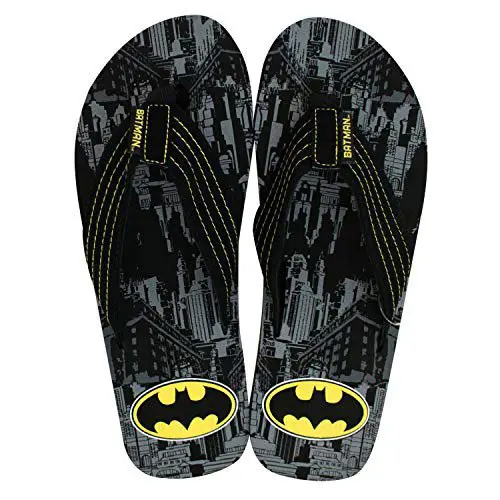
Batman Sandals (camp shoes)
Camp shoes are not an essential piece of gear. However, the utility of having something easy to wear around camp or in town outweighs the cost of carrying extra weight (for me). I found these Batman Sandals at a Walmart on the Continental Divide Trail and have had them for almost five years now. Camp shoes do not need to be fancy. Just get something cheap, light, and somewhat durable (you probably want something that won’t disintegrate if they get wet).
6 oz / 170 g (pair)
Garmin fenix 7X Sapphire Solar Multisport GPS Watch
The Garmin fenix 7X Sapphire Solar was something I considered for a long time before I finally decided to add it to my kit. My only regret is that I didn’t get one sooner. Its battery life is superb, it does an excellent job of accurately tracking my activities (even when in canyons or places where my phone’s GPS has historically had difficulty). The watch’s (and the app’s) functionality has proven impressive at every turn and my only complaint is that it uses a proprietary Garmin cable to charge, not USB-C.
2.9 oz / 82 g
Thrupack Summit Bum
The Thrupack Summit Bum has become an essential piece of my hiking kit (and my not-hiking kit – I shamelessly use it off the trail and receive nothing but complimentary stares from everyone). This lightweight fanny pack revolutionized my hiking and is now where I keep all of my snacks for the day, sunscreen, hand sanitizer, lighter, etc. It has an exterior pocket that can fit a large cell phone, two interior pockets, and it’s water-resistant. Not to mention its huge sex appeal.
Detailed review | 2.5 oz / 71 g
Thrupack Comfy Strap
The Thrupack Summit Bum comes with a strap, but if you want an upgrade on both your comfort and your awesomeness, then a Comfy Strap is worth the investment. This strap comes in a variety of prints, but most importantly it is stretchy (and comfy). It’s unnecessary, but I am happy I have one.
2.2 oz / 62 g
Black Diamond Carbon FLZ Trekking Poles (125 cm)
I typically don’t use trekking poles, but because I expect to be carrying a huge amount of weight for some sections of the Hayduke, I figured it was time to employ a pair once more. These are also the poles I will use when I (hopefully) run the Moab 240 later this year. The Black Diamond Distance Carbon FLZ is one of the lightest options available and they break down/set up quickly. If you’re paying close attention, yes, these are the women’s poles. What’s the difference between the men’s and women’s versions? Literally just the color.
12 oz / 340 g (pair)
Platypus QuickDraw
I’ve used the Platypus QuickDraw extensively, including for the entirety of the Arizona Trail. My expectation is that it will be incredibly frustrating at times to filter the amount of water needed between sources, especially since I don’t expect the water sources to be particularly good (i.e. very silty/mucky/sediment-filled). I considered bringing a gravity filter instead of the QuickDraw, but feel like since I won’t be filtering too often, I will accept the consequences of a more work-intensive filter process whenever it comes along.
Detailed review | 2.2 oz / 62 g
Zpacks Flat Groundsheet (Duplex)
For cowboy camping on the Hayduke, a groundsheet is pretty much a must if you want to maintain the illusion that you’re keeping your gear free(ish) of sand. I’m bringing the Zpacks Flat Groundsheet for the Duplex (although I am now thinking that maybe I should have sized up to the Triplex) to accomplish this job. Unlike the Hyperlite Mountain Gear ground cloth (which for reasons I still don’t understand has stake-out loops parallel to the ground), it can be easily staked down should placing my gear all around it like some strange backpacker seance isn’t sufficient.
3.1 oz / 88 g
ULA Equipment Flow (700 ml)
There are a few things, like a fanny pack, that I’ve grown accustomed to whilst backpacking, and having an easily accessible water bottle is one of them. The ULA Equipment Flow accomplishes this by providing a pocket to fit a 700 ml water bottle (although there are 500 ml and 1L versions available as well) on your backpack’s shoulder strap. If you’ve never tried this before, I highly encourage it; having an easily accessible bottle also promotes drinking more!
0.9 oz / 25 g
HydraPak Seeker (4L)
Hiking the Hayduke in the spring typically means more reliable water sources than hiking it in the fall, but that doesn’t mean all these sources can necessarily be relied upon. That’s why I’m bringing a four-liter HydraPak Seeker collapsible water bladder with me. There’s a six-liter version as well but it’s significantly heavier and it makes more sense to carry two additional plastic bottles or a two-liter bladder instead of using the six.
3.7 oz / 105 g
Smartwater Bottle (1.5L x 2, 1L x 2, 700ml x 1)
For what I expect to be massive water carries, I plan to use a combination of five Smartwater bottles in addition to my 4L water bladder giving me a total water capacity of nearly 10 liters. These bottles are quite structurally sound compared to something like collapsible Arrowhead bottles and they slide easily in and out of backpack pockets (trust me, this is important). You can also put a Platypus QuickDraw or Sawyer Squeeze on the top and filter from one bottle to another.
Snow Peak GigaPower 2.0
I thought about going stoveless for the Hayduke but having a stove means I have something to do in camp should besides film what I hope to be daily videos, log everything from the day in my journal (on my phone), and stare at the next day’s map looking for shortcuts while trying to figure out how little water I can carry. The Snow Peak GigaPower 2.0 stove is not one I’ve used before, but one that has received excellent feedback from thru-hikers. What better place to use a bunch of brand-new gear than (maybe?) one of the country’s most difficult backpacking routes?
4.23 oz / 120 g
Snow Peak Titanium Trek 700 Mug
The Snow Peak Titanium Trek 700 can fit a 110 g gas can (the smallest gas can), and the GigaPower 2.0 stove – everything I could ask for in a macaroni and cheese-making and/or hot-water-heating-up vessel. Again, a new piece of gear I’ve never used, but not something I imagine I will regret bringing along on the Hayduke.
4.8 oz / 136 g
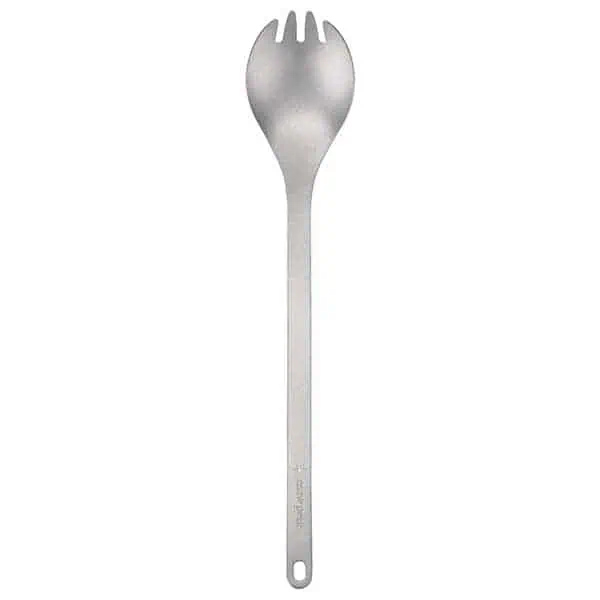
Snow Peak Long Titanium Spork
Yes, you can get a plastic spoon from McDonald’s, but if you want a utensil that’s going to last forever (so long as you don’t lose it), then get a Snow Peak Long Titanium Spork. It won’t melt, it’s easy to clean, and it’s titanium (which means that you can use it to fight off wild animals). I don’t know why it took me this long to go with the long version instead of the standard version (probably because the standard one comes in fun colors), but I expect it will serve me well for the couple of times I end up eating a fancy dehydrated meal on the trail.
0.7 oz / 20 g
BioLite HeadLamp 325
I could just use a minimalist pen light and be super cool and ultralight, but I want a headlamp that’s going to actually aid should I decide to do some night hiking on the Hayduke. The BioLite HeadLamp 325 is my current go-to (and if you need something a bit brighter, there’s also the BioLite HeadLamp 425) It’s lightweight, comfortable, and bright. The only downside? It’s still a micro USB plug. Where’s the USB-C, BioLite?
1.76 oz / 50 g
Garmin inReach Mini 2
Effectively a required piece of gear on the Hayduke, I am bringing the Garmin inReach Mini 2 (which only weighs 3.5 oz / 99 g) with me to stay in touch and, most importantly, to get out of any life-threatening situations I (hopefully don’t) get myself into. The Mini 2 has 2-way texting (which works well), tracking (also works well), and SOS capabilities (fortunately, I haven’t had to test this). The only catch is that it requires a (paid) monthly plan to function. For more on PLBs, check out the best personal locator beacons.
3.5 oz / 99 g
Rab Silk Neutrino Sleeping Bag Liner
A sleeping bag liner isn’t necessary, but I am taking a Rab Silk Neutrino Sleeping Bag Liner for a couple of reasons: 1) to keep my quilt clean (because having and eventually washing a dirty sleeping bag is no fun), and 2) for when I end up too hot during the night and just want to use the liner as my sleeping bag. It appears that, sadly, Rab doesn’t make this anymore, so I will likely be on the hunt for a replacement soon (after this gets destroyed on the Hayduke).
3.1 oz / 88 g
NEMO Equipment Fillo Elite Pillow (Large)
A pillow is not something you need out on the trail, but after trying and seeing how comfortable the NEMO Equipment Fillo Elite is, I’ve decided that it’s well worth the weight. I have a terrible time sleeping outdoors (and sometimes indoors), so anything that can help me sleep through the night without waking up and feeling hungover from lack of sleep is welcomed. If you haven’t already given a pillow a try, I suggest the NEMO pillows over the Sea to Summit pillows (which aren’t as comfy).
3 oz / 85 g
Cloud Gear Bear Bag (Large)
Yes, I could just use a reusable plastic bag to store my food, but I’ve learned that (for me, at least) having a bag that closes is advantageous. The Cloud Gear Bear Bag (a bit of a misnomer because it’s not bear-proof) is a roll-top stuff sack that is large enough to hold my food (most of the time – although I will have way too much food for this bag at certain points during the Hayduke and should probably have gotten the huge size instead of the large), and it can be hung (probably where the “bear bag” comes from) should I happen to find a tree somewhere in the Utah desert.
1.3 oz / 37 g
Hyperlite Mountain Gear Roll-top (Medium)
Even with a pack liner, it’s a good idea to keep your sleeping bag in a dry sack (because your sleeping bag keeps you alive at night), and while the Hyperlite Mountain Gear Roll-top Stuff Sack is not technically a dry bag, so long as it’s inside of your backpacking and you’re not planning on completely submerging it, you won’t have to worry about your bag getting wet. This will be my sleeping bag’s third line of defense against water whilst packrafting or holding my pack above my head during water crossings.
1.2 oz / 34 g
Hyperlite Mountain Gear Drawstring Stuff Sack (Large)
The Hyperlite Mountain Gear Drawstring Stuff Sacks weigh virtually nothing (because Dyneema because expensive), they’re water-resistant (these are less waterproof than the roll-top bags – if “less waterproof” is technically a thing), and they come in three colors and six sizes. I have found the large to be big enough for my extra socks and clothing (I keep my shell and puffy separate). Are Dyneema stuff sacks nice to have? Absolutely. Are they necessary? Not at all.
0.53 oz / 15 g
Hyperlite Mountain Gear Drawstring Stuff Sack (Small)
Could the job of storing my electronics (mostly cords) be done by a Ziploc bag? Sure. But that would be wasteful (I use enough Ziplocs for my food already). The Hyperlite Mountain Gear Drawstring Stuff Sacks weigh virtually nothing (because Dyneema because expensive), they’re water-resistant (these are less waterproof than the roll-top bags – if “less waterproof” is technically a thing), and they come in three colors and six sizes. I use a small for my cords and spare camera battery/memory cards, but could probably get away with a nano (which would save me a whole 0.21 oz / 6 g).
0.35 oz / 10 g

Nylofume Pack Liner
I typically wouldn’t worry too much about using a pack liner with a waterproof pack, but since I will be packrafting and crossing multiple bodies of water deep enough to warrant me holding my pack above my head, I don’t want to take chances. That’s why I’m lining my pack with a nylofume pack liner.
0.9 oz / 26 g
Alpacka Raft Scout
As part of the Hayduke, I’m bringing an Alpacka Scout and hoping to packraft three sections: the Colorado River just outside of Moab, the Escalante River, and eight miles of the Colorado River in Grand Canyon (the maximum permissible on a backcountry permit). I am planning on only paddling flat water and could have gone with something like the Ghost – a lighter packraft – but there’s a chance the Escalante will have a lot of bottoming out so I went with the more durable, but still lightweight, Scout.
3.6 lb / 1.63 kg
Supai Adventure Gear Olo Packraft Paddle
Finding a lightweight packraft paddle was not easy, but I eventually found the Supai Adventure Gear Olo Packraft Paddle. It weighs less than a pound (454 g) and is the only paddle I could find in this weight category. It breaks down into five pieces and is made from carbon fiber. It’s strictly a flatwater paddle, but that’s all I need it for. I’m sure it will work better than me leaning over the sides of the packraft and paddling with my hands.
14.5 oz / 411 g
Astral Airbelt 2 (for Grand Canyon National Park)
As was the case with my paddle, finding a lightweight PFD wasn’t easy; then, I discovered the Astral Airbelt 2 Personal Flotation Device. It weighs less than a pound (454 g) and cinches around your waist and inflates with a CO2 cartridge (or your mouth) when needed. It’s a USCG Approved Type V PFD which means it meets the PFD requirement for packrafting in Grand Canyon National Park.
12 oz / 340 g
Alpacka Raft Inflation Bag
As much fun as I would have inflating the Alpacka Scout with my mouth every time I reach a new packraft section, the 5 oz / 142 g weight penalty of the Alpacka Raft Inflation Bag is well worth the additional weight. This is essentially a large sack that is attached to the inflation valve on the packraft to make inflation of the packraft easier. I’ve tried it out and it works a lot better than the similar bags you find included with some sleeping pads (which are typically useless).
5 oz / 142 g
Alpacka Raft Basic Repair Kit
As is the case with my sleeping pad, I don’t want to run the risk that a hole in my packraft is going to turn it into dead weight. An Alpacka Raft Basic Repair Kit has everything I (should) need to fix any issues with my raft. If it’s not enough, there’s always the option of using up all my Gorilla Tape.
1 oz / 28 g
Cleanwaste GO Anywhere Toilet Kit Waste Bag x 3
One of the joys of river running? Packing out your poop. When traveling in the Escalante River corridor – whether you’re backpacking or paddling – you’re required to pack out all solid human waste (that means poop). If you’re only planning to make one or two poops whilst in the backcountry, a simple wag bag may do, but if you’re going to be out for longer, a system like the Cleanwaste GO Anywhere Toilet Kit Waste Bag will get the job done.
2.4 oz / 68 g (each)
Vargo Titanium Dig Dig Tool
I’ve talked a lot about pooping in the woods and packing out your toilet paper in the past, and I will probably continue to do so. Backcountry poops aren’t glamorous, but they are a reality of trail life. A lot of people don’t bring a trowel saying that a shoe, a rock, a trekking pole or whatever will substitute. Sometimes this will be the case, but other times you are not going to be able to dig a proper cat hole (that’s a hole for your poop). The Vargo Titanium Dig Dig Tool is an excellent solution to the trowel question.
1.2 oz / 34 g
Ben’s 100 Max Formula Insect Repellent (1.25 fl. oz.)
I’m not the biggest fan of DEET, but it works. I’ve been taking a 1.25 fl. oz. bottle of Ben’s 100 Max Formula Insect Repellent with me out on the trail because the bugs have been bad and DEET works. My suspicion is that I won’t encounter too many bugs on the Hayduke in the spring, but just in case, I would like to be prepared.
Sawyer Permethrin Pump Spray (24 oz)
I really hate bugs. Even gazing at a beautiful photo of your hike can be tormented by memories of mosquito swarms. That’s why, in addition to carrying repellent, I treat my clothing with Sawyer Permethrin before hitting the trail. One treatment lasts up to six washes or six weeks. Just don’t use it to insect-proof your cat (it’s toxic to cats in its liquid form – but safe after it dries and binds to your clothing).
Sun Bum Mineral SPF 30 Sunscreen Lip Balm
I made the mistake of not bringing any lip balm on an eight-day hike in the Sierra Nevada once and it was one of my worst experiences in the backcountry – so painful. Now I’m stocked up on Sun Bum Mineral SPF 30 Sunscreen Lip Balm to make sure I never have to go through that again. Whatever lip balm you bring, just make sure it has some SPF.
0.8 oz / 23 g
Body Glide for Her (0.35 oz)
The worst thing on the trail is chafe (and more specifically, ass chafe). Thankfully, there is Body Glide for Her to alleviate the suffering. It’s the same thing as Body Glide Anti-Chafe Balm but it’s also “rich in vitamins A, B, E, and F”. What? Do only “hers” need vitamins? I want some, too. Just remember to apply before the chafe parade starts.
2 oz / 57 g
Dr. Bronner’s Organic Hand Sanitizer
If there’s one thing I can say my long-time hiking partner Mr. Appa taught me, it’s that he taught me about Dr. Bronner’s Organic Hand Sanitizer. It’s a spray-on hand sanitizer that makes my hands smell lavender-y and (hopefully) cleans them. There’s a peppermint version available as well but it’s always more difficult to find.
2 oz / 57 g
Coppertone SPORT
Sunscreen should be broad-spectrum (UVA/UVB), it should be designed to not run off when you sweat, and it should ideally be SPF 50 (above SPF 50 provides only marginal additional protection at an often much more expensive price). I like the consistency of Coppertone SPORT SPF 50 (I don’t like Banana Boat). What do you like? Not being sunburned? Excellent.
3.2 oz / 91 g
GUM Folding Travel Toothbrush
I like the GUM Travel Toothbrush because it folds into itself for storage and packs away easily. However, once the bristles start to wear they get stuck in the brush when closing it. Still, I typically use one of these on the trail since they can fit easily in my pocket, fanny pack, or backpack.
0.8 oz / 23 g
Dr. Bronner’s Travel Toothpaste
In case you are unaware, there are small versions of toothpaste available. You do not need to bring a huge tube of toothpaste whilst hiking. Get some Dr. Bronner’s Toothpaste (or just any travel-sized toothpaste) and keep yourself from becoming a complete woodland savage. Or you can just do the super-uber-duper-mega ultralight savage thing and don’t brush your teeth with toothpaste.
1 oz / 28 g
Neosporin Ointment
A lot of people don’t talk about (or don’t bring) any kind of first aid into the backcountry, but it’s a good thing to have some antibiotic ointment around for when you slice your hand open whilst cutting off some of that sweet and delicious cheese. I carry a small tube of Neosporin Ointment to fight off the infections. Have I used it? Yes. Is it worth carrying? Sure.
1 oz / 28 g
3M Medical Tape
Carrying a bit of 3M Medical Tape won’t cost a lot in terms of weight, but it can be very helpful should you slice something open and need more than just a Band-Aid. I guess I can just rely on my Gorilla Tape, but I don’t want to rip all my hair (and skin) off.
0.6 oz / 17 g
Band-Aid Bandages
It’s not a bad idea to have a couple of Band-Aid Bandages tucked away somewhere in your pack for stopping the bleeding that will inevitably occur somewhere on your body during your hike.
0.2 oz / 6 g
Charmin Ultra Soft
Oftentimes I have to take what I can get in terms of toilet paper on the trail, but if I ever get the choice, it’s Charmin Ultra Soft for the win. Keeping clean will minimize butt chafe and maximize your poo-freeness. I usually pack out an entire roll – way too much. And remember to pack out your toilet paper!
1 oz / 28 g
Sea to Summit Wilderness Wipes
It took me a while to come around, but damn, having some Sea to Summit Wilderness Wet Wipes (or any wet wipes) can be life-saving in the backcountry. In addition to ensuring the cleanest of bums following a backcountry waste disposal, they can be used to clean your disgusting feet to help keep them blister-free. But as with toilet paper, just remember to pack them out.
3 oz / 85 g
Nitecore Carbo 20000
Because I have a number of electronics I’ll need to keep charged and because I plan to have some long sections without access to charging, I’m bringing a Nitecore Carbo 20000 in addition to a Nitecore NB10000 Gen II to give myself 30,000mAh of power. Honestly, I maybe should be bringing two of these as well, but we’ll see how good I am about conserving battery.
10.42 oz / 295 g
Nitecore NB10000 Gen II x 2
Yes, I’m bringing two Nitecore NB10000 Gen II power banks in addition to the above Nitecore Carbo 20000. One will live in my fanny pack (they’re quite small) and the other will live in my backpack as my emergency reserve power bank. Each of these has one USB port and a USB-C port (used to both charge the battery pack and a device).
5.6 oz / 159 g
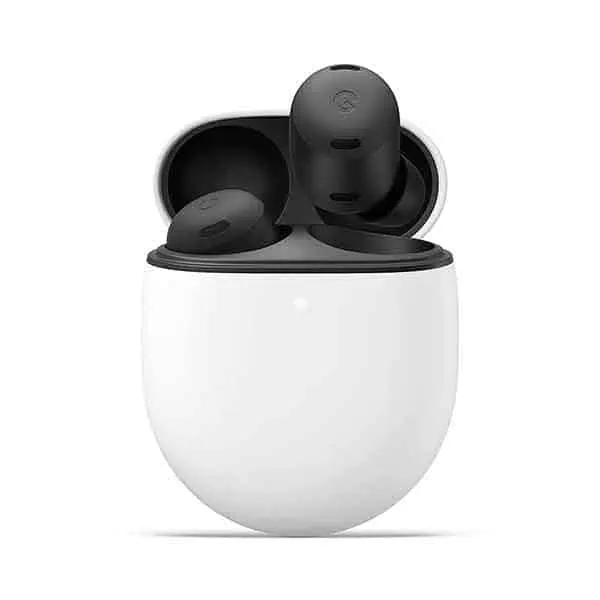
One of the most important things I look for in earbuds is battery life. The Pixel Buds Pro offer up to 31 hours of battery life (around 11 hours for a full charge with additional charges available via the case) and have excellent noise canceling. They’re comfortable to wear for long periods (i.e. all day) and the microphone works well.
2.2 oz / 62 g
You’re probably not looking at this gear list in hopes of finding yourself a new phone, but I get asked which phone I am using often enough that I’ve decided to include the Google Pixel 7 Pro here. I’m not an iPhone fan, so I stick with Google. This thing has a killer camera and will be used extensively for navigation and taking notes (in addition to photography).
7.41 oz / 210 g
Peak Design Everyday Case
Peak Design makes both excellent camera and phone accessories. The Peak Design Everyday Case has a magnet that allows me to attach my wallet and a variety of optional mounts that make using my phone in my car or on my bicycle a breeze. Does any of this help hiking? I guess not, but this is still an awesome case and is still officially part of my pack.
1.5 oz / 43 g
Anker Nano II 65W
On a long-distance hike you need to carry a wall charger with you if you hope you be able to charge your devices when you finally make it to town (or wherever there is to resupply on the Hayduke). The Anker Nano II 65W has three ports, one USB-A and two USB-C, which is plenty to get my devices charged. It’s also got a folding plug which is great for not stabbing holes in my stuff sacks, down jacket, or pack liner.
4.5 oz / 128 g
Sony A7R IV
After dropping and breaking my Sony a6500 while carrying my bicycle across the Grand Canyon, I figured my money would be better spent investing in an upgrade rather than a repair. The upgrade? The Sony A7R IV. In the past, I had told myself that I didn’t want a full-frame camera because of the weight, but now that I have one, I regret not making the switch sooner. This camera is incredible and I’m extraordinarily pleased with its performance thus far. That said, it is heavy and an argument could probably be made against it, but I’m happy with it.
1.46 lbs / 665 g
Sony FE 24-70 f2.8 GM
I’ve made a lot of purchases in recent years and thought to myself sometime later, “Damn, I should have just spent a little more and gotten the upgraded version of X”. I decided not to make this same mistake with my camera setup and got the only lens I could imagine myself ever wanting or needing (unless I want to go wider) with the Sony FE 24-70 f2.8 GM. It’s wide enough for epic landscapes and has enough zoom/speed for anything I will want to photograph in the backcountry. Sure, I could get a huge zoom lens, but 1) I don’t want to have to carry it, and 2) wider is better as far as all the things I’ll be taking pictures of (or at least 98% of the time).
1.95 lb / 886 g
DJI Pocket 2
The DJI Pocket 2 is a lightweight 4K-capable camera with a built-in screen and a three-axis gimbal. It’s my goal to produce more video content on the Hayduke, so I’m hoping this will motivate me to do so (without worrying about draining my phone battery too quickly or having to use my large camera for video). Will I regret this purchase and/or decision? I guess we’ll have to wait and see how much video comes out of this hike. The one annoyance is that the new version of this is expected to be released sometime during my hike. Oh well.
4 oz / 116 g
Peak Design Travel Tripod (Carbon Fiber)
Another potentially regrettable decision? Bringing my Peak Design Travel Tripod. Again, to encourage me to capture more footage and videos of myself (since I expect to be alone for the majority – if not the entirety – of this hike). I am using the Peak Design Ultralight Conversion Kit (which is far from ultralight, but I appreciate the effort) that makes the tripod over a pound (453 g) lighter – but still heavy enough to sour the face of any ultralighter.
27.3 oz / 774 g
Peak Design Capture
The Peak Design Capture Clip is practically part of my backpack, I never take it off. It makes carrying my camera incredibly easy and saves me from having to open my pack to access my camera or having it hang annoyingly from a strap around my neck. There’s also an attachment for a GoPro if I decide I want some POV video (or if I need a dashcam for my inevitable fight with a bear).
3 oz / 85 g
Peak Design Shell (Medium)
To me, the Peak Design Shell is an essential piece of equipment with the Peak Design Capture. The Shell comes in three sizes and is designed to keep your camera dry in the rain. I had to switch from the small to the medium with my new camera. It also protects from the sun, dust, would-be robbers, and snow should you be so (un?)lucky. It can be tricky to adjust the zoom and focus with the Shell on and I usually remove it each time I take a photo. It’s made from a stretchy fabric that will also help to prevent nicks or abrasion when you inevitably bash your camera against a rock.
2.68 oz / 76 g | Detailed review
Slinger Silicone Camera Skin
I don’t know that my Slinger Silicone Camera Skin is completely necessary given that my camera is already being protected by the Peak Design Shell, but I’m going to take as few risks as possible with what’s essentially my most expensive piece of backpacking equipment. This lightweight piece of silicone gives me a little more peace of mind while carrying my camera through the backcountry.
1.59 oz / 45 g
Sony PCK-LG1 Screen Protect Glass Sheet
The same story with my Sony PCK-LG1 Screen Protect Glass Sheet as my silicone camera skin, I’m doing everything I can to ensure I don’t destroy my camera in the backcountry (also need to protect that resale value). The A7R IV has a touchscreen (that I never use), so making sure it’s free from debris and cracks is probably a good idea.
0.03 oz / 1 g
Sony TOUGH-G SDXC Card (64 GB) x 4
One of the drawbacks of deciding I should spend more on my camera is the fact that I must now spend more on memory cards (at least if I want the best performance). I have four Sony SF-G Series TOUGH Cards at 64GB each – 64 instead of 128 because they’re half the price (i.e. no price break for a 128) and I don’t want to risk having 128GB of photos lost on a single card. The TOUGH specification means their bend resistance is high, as are their waterproof and dustproof grades (IP68).
0.03 oz / 1 g

SanDisk Extreme PRO microSD (256GB) x 2
You know what’s ultralight? MicroSD cards. The DJI Osmo 2 uses microSD cards and I am hoping that 512 GB of total storage will be enough for the entirety of my hike. If it’s not, I’m going to have quite the nightmare when I try dumping it all onto my computer. I’m bringing two, 256GB, SanDisk Extreme PRO microSD cards to ensure I don’t have any issues when recording video or time-lapses.
Benchmade 533 Mini Bugout Folding Knife
I have become disillusioned with my Opinel No. 6 Stainless Steel Pocket Knife and so I’ve decided to upgrade to something with a locking blade I can trust with the Benchmade 533 Mini Bugout Folding Knife. Sure, I may mostly use it to (literally) cut cheese (and fight off woodland creatures, obviously), but it’s light enough that I hardly notice it in my fanny pack. When I’m already carrying ten liters of water, what’s the weight of a knife in my fanny pack? Maybe I should have gotten something with a partially serrated blade.
1.5 oz / 43 g
Therm-a-Rest Instant Field Repair Kit
I can tell you from experience that sleeping on a leaky sleeping pad is no fun. Waking up in the middle of the night, blowing up your sleeping pad, waking up your friends, and then repeating throughout the night is no way to prepare for a day filled with what will presumably be a lot of physical exertion. I bring two (but I might start bringing three) sleeping pad patches with me out on the trail; I usually leave the alcohol swabs at home since they typically are dried out by the time I end up using them. A couple of patches are a wise thing to have stashed somewhere in your pack.
0.2 oz / 6 g
Gorilla Tape
Tape. An often overlooked, but incredibly useful thing to have with you on a thru-hike. Tear your down jacket? Tape! Rip your tent? Tape! Need to shut up your hiking partner? Tape! Just don’t bring an entire roll. I like Gorilla Tape because it’s incredibly sticky, waterproof, and thick. I’ve used this to patch a hole in my shorts before and the tape didn’t come off even after multiple washes. That said, get whatever tape you want – just bring some (because you can’t have mine).
1 oz / 28 g
Mini Bic
The Snow Peak GigaPower 2.0 has an ignition button, but it doesn’t always work as great as I would hope. So I need to carry a lighter (I should probably carry one regardless). I carry a Mini Bic. It is like a regular Bic, but mini. You know, because ULTRALIGHT. I guess I could just carry like five matches instead and that would be even more ultralight, but I’ll stick with the lighter. Be responsible with fire, friends.
0.39 oz / 11 g
What do we think? Do you have any suggestions, critiques, or questions on the gear? I’m always happy to talk gear – though I’m often hesitant to admit it. Leave a comment below and let me know your thoughts.
Affiliate Disclosure: This page may contain affiliate links, which means I may receive small commissions for purchases made via these links at no additional cost to you. This helps pay the bills and keep the site up and running. Thank you for your support!
